Collection overview
The British Library’s Alfred Cort Haddon 1898 Expedition (Torres Strait and British New Guinea) Cylinder Collection includes 141 wax cylinders recorded on the Torres Strait Islands and in British New Guinea as part of the 1898 Cambridge Anthropological Expedition to Torres Straits. This cylinder collection constitutes the earliest collection of sound recordings in the Library’s Sound Archive.
The collection is made up of two parts, 102 cylinders that were recorded on the Torres Strait Islands, and 39 that were recorded in British New Guinea. This page focuses on the 39 British New Guinea cylinders, referred to here as C80 British New Guinea, even though in theory it is only one part of the whole C80 collection. There are 37 recordings from 39 cylinders, as two were not digitised due to damage.
Research by Vicky Barnecutt, British Library, and Don Niles, IPNGS.
Overview
Haddon, Ray, Wilkin, and Seligmann left Mer / Murray Island in the Torres Strait on 23 May 1898 and arrived at Delena on the south coast of British New Guinea on 27 May. They took Charlie Ontong, the expedition’s cook, with them to British New Guinea; Haddon noted that he was a Javanese/Malay man from Batavia [Jakarta] (Haddon 1901:71, 198). From Delena, they continued to Port Moresby and the Central District of British New Guinea. Rivers, McDougall, and Myers remained on Mer. Seligmann separated from Haddon, Ray, and Wilkin on 25 June. Haddon, Ray, and Wilkin visited Mekeo and Roro, and then left to return to Mer on 20 July. On 11 September, Haddon, Rivers, Ray, and Wilkin arrived on Kiwai, an island in the Fly River delta, now part of Western Province. They met up with Seligmann there on 12 September, and Haddon, Rivers, Wilkin and Seligmann left for Mabuiag on 15 September. Seligmann had spent nearly 4 months in British New Guinea. Ray stayed on Kiwai until 29 September.
The evidence suggests that Ray was responsible for most, if not all, of these recordings. Haddon noted that Ray made recordings of British New Guinea material on at least five occasions, including times when Seligmann wasn’t with them (Haddon 1901:99, 201, 234, 252, 266). There are numerous references to Ray making recordings in his journal; these details are included below.
May 1898
On 23 May, Haddon, Ray, Wilkin, and Seligmann left Mer for British New Guinea on the Olive Branch, a London Missionary Society (LMS) schooner. The ship’s cook was a man called Mahmoud Ali who came from Penang (Haddon 1901:198).1Ali and Ontong are noted as the performers for the cylinder C80/1482 which is in the Torres Strait Islands part of this collection. It is not clear whether he was present for the whole of the British New Guinea trip or only for the journey between Mer and Port Moresby. The ship arrived at Delena, the LMS mission station, on 26 May (Haddon 1901:199); Delena is a village on the coast to the southwest of Yule Island. Haddon considered Delena to be in the Mekeo District (1901:263) whereas Seligmann noted that it “should probably be considered the eastern limit of the Roro district” (Seligmann 1909:319, n. 2). They also went ashore briefly to visit the Sacred Heart Mission on Yule Island. On 27 May in Delena, “Ray gave a tune on the phonograph, and got some young people to sing a hymn on a blank cylinder” (1901:200). Ray noted in his journal that this was the “1st Hymn in Motu hymn book” (Ray 1898–1899:42). This cylinder recorded at Delena on 27 May 1898 is the earliest known use of the phonograph in what is today Papua New Guinea. Unfortunately, we do not know which cylinder it is; there are a number of hymns recorded, three of which have no language or place name noted (C80/1455, C80/1457, C80/1458).They left Delena on 28 May, and landed a Samoan teacher and family at the Motu village of Borepada (Porebada) in Redscar Bay on 30 May (1901:205). The following morning, 31 May, they managed to get ashore briefly before departure to Port Moresby (Haddon 1898–1899:94). On their arrival in Port Moresby they were met by David Ballantine, Treasurer and Collector of Customs, and then Anthony Musgrave, the Government Secretary. Musgrave informed them that a “grand dance” was planned at the village of Hula, also known as Bulaa. He offered them the use of a Government schooner to travel there (1901:205).
| British Library shelfmark | Recording title | Performer name | Recording location | Recording date | Content description | Performer description | Recording notes | Languages | Genre | Recordist | Recording length | Recording trip | Description of cylinder | Collection title | Cylinder location | Images of cylinder containers / documentation | Related print publication: | Related print publication: | Related print publication: | Related print publication: | Related print publication: | Related print publication: |
|---|---|---|---|---|---|---|---|---|---|---|---|---|---|---|---|---|---|---|---|---|---|---|
| C80/1455 | Hymn 41 Glory | Unidentified (male chorus) | British New Guinea | 27 May 1898 – 1 October 1898 | 1. Unaccompanied male vocal group. | Reasonable quality recording but some surface noise. | Field recordings | Ray, Sidney | 2'12" | Alfred Cort Haddon 1898 Expedition, British New Guinea | Brown wax cylinder | Alfred Cort Haddon 1898 Expedition (Torres Strait and British New Guinea) Cylinder Collection | British Library | 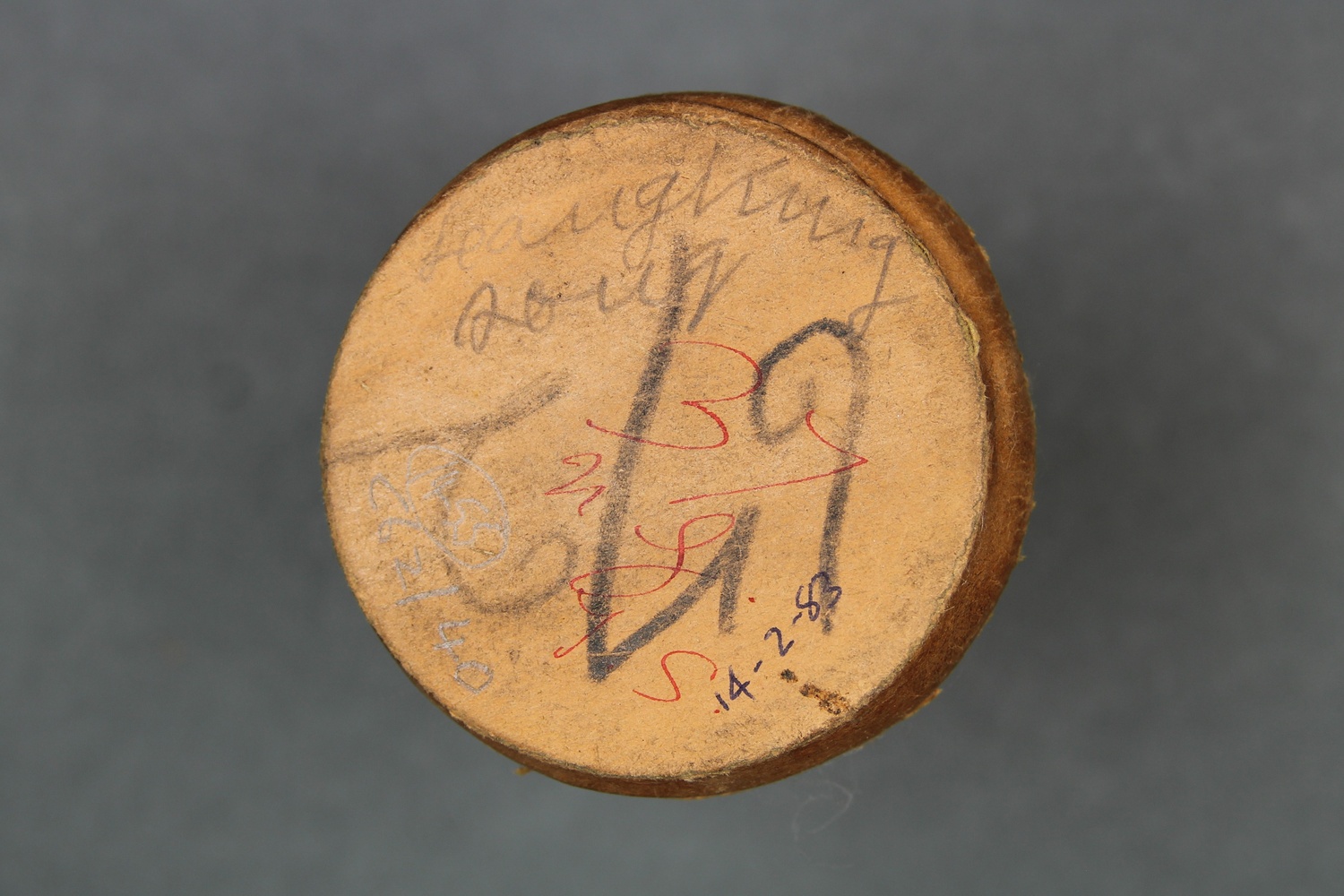 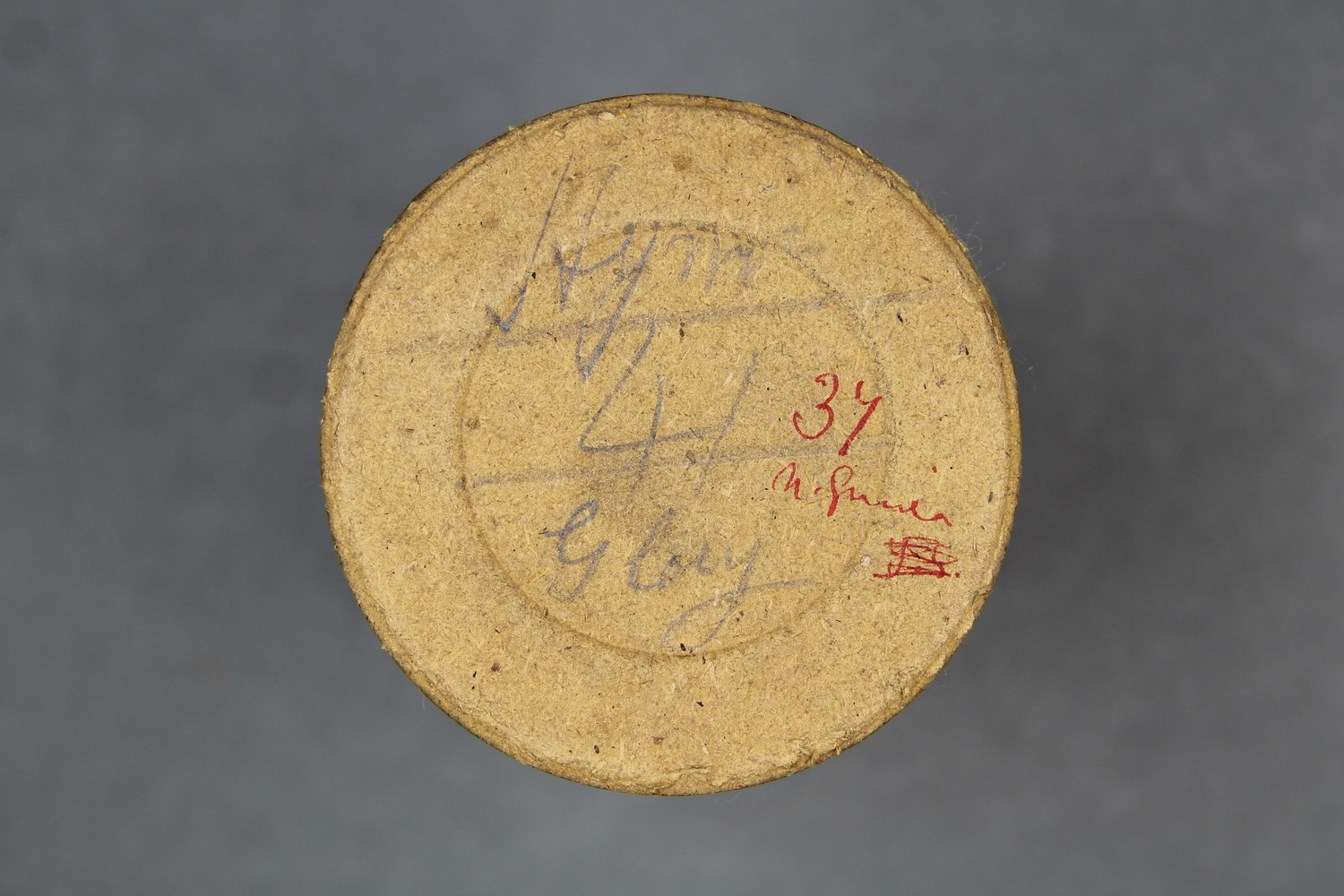     | ||||||||
| C80/1457 | Hymn | Unidentified (male chorus) | British New Guinea | 27 May 1898 – 1 October 1898 | 1. Unaccompanied male vocal group. | Reasonable quality recording but with surface noise. | Field recordings; Hymns | Ray, Sidney | 2'13' | Alfred Cort Haddon 1898 Expedition, British New Guinea | Brown wax cylinder | Alfred Cort Haddon 1898 Expedition (Torres Strait and British New Guinea) Cylinder Collection | British Library | 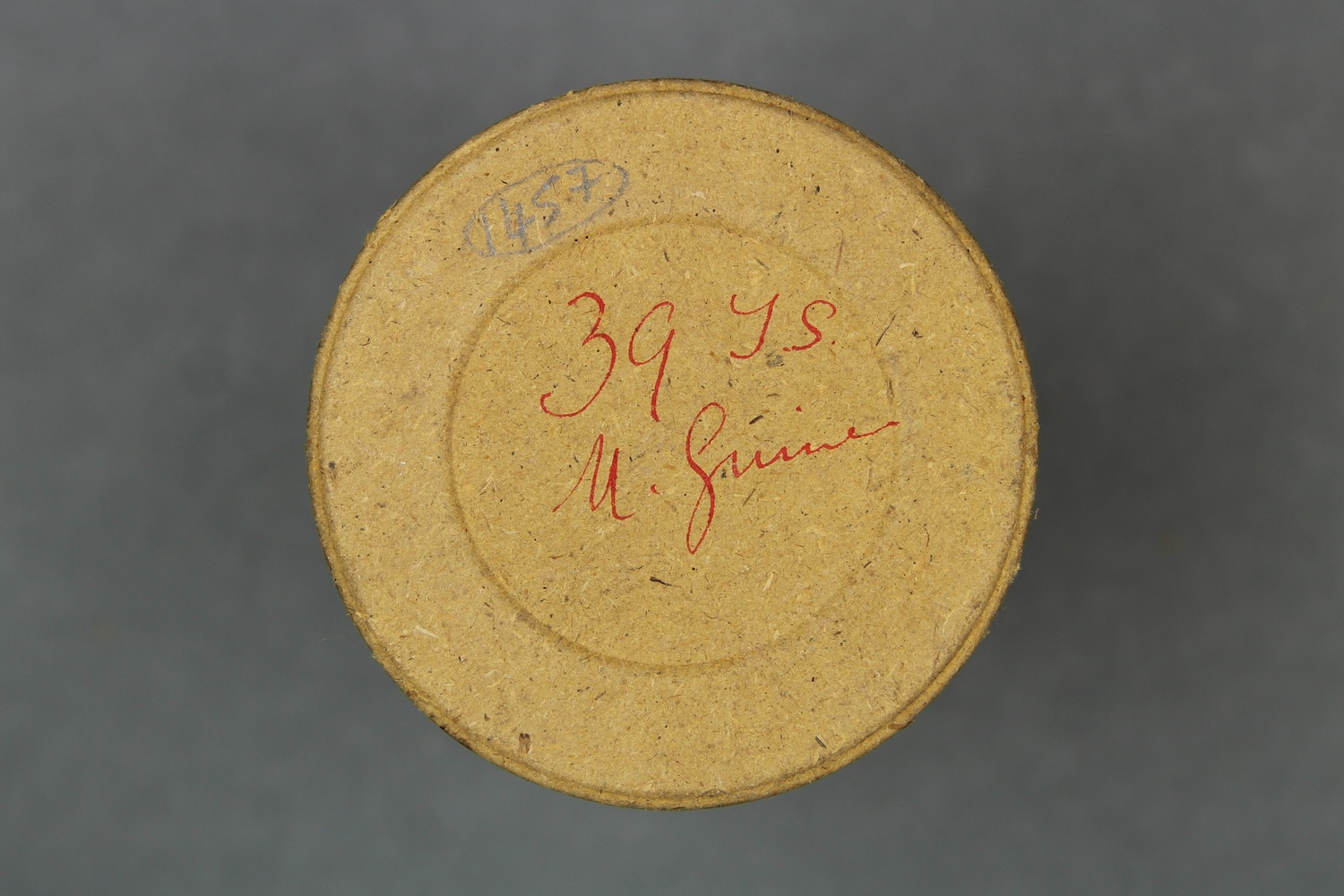      | ||||||||
| C80/1458 | Hymn No.23 Wareham | Unidentified (singer, male) | British New Guinea | 27 May 1898 – 1 October 1898 | 1. Unaccompanied male vocal solo. | Reasonable quality recording but with some surface noise. | Field recordings; Hymns | Ray, Sidney | 1'50" | Alfred Cort Haddon 1898 Expedition, British New Guinea | Light brown wax cylinder | Alfred Cort Haddon 1898 Expedition (Torres Strait and British New Guinea) Cylinder Collection | British Library | 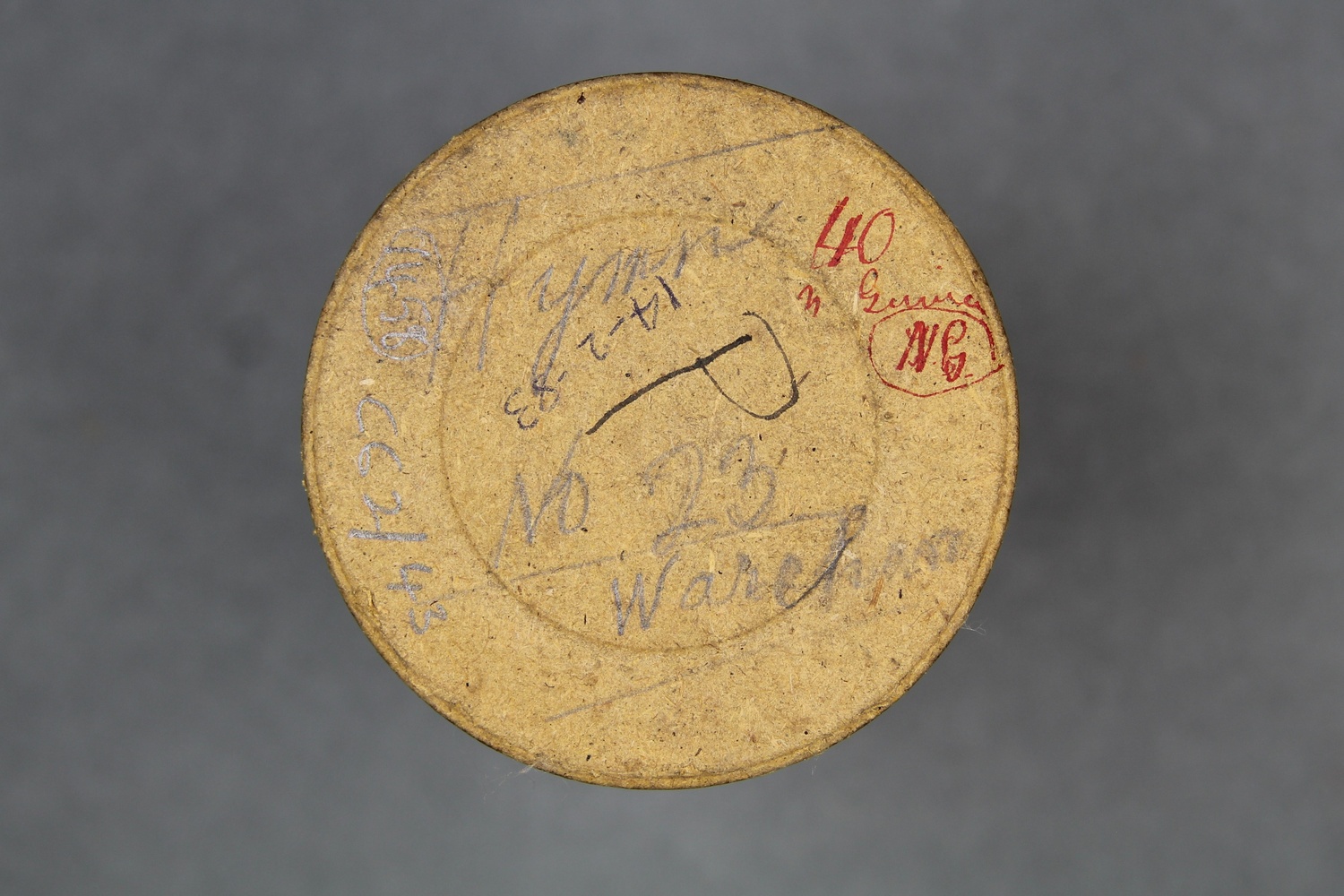 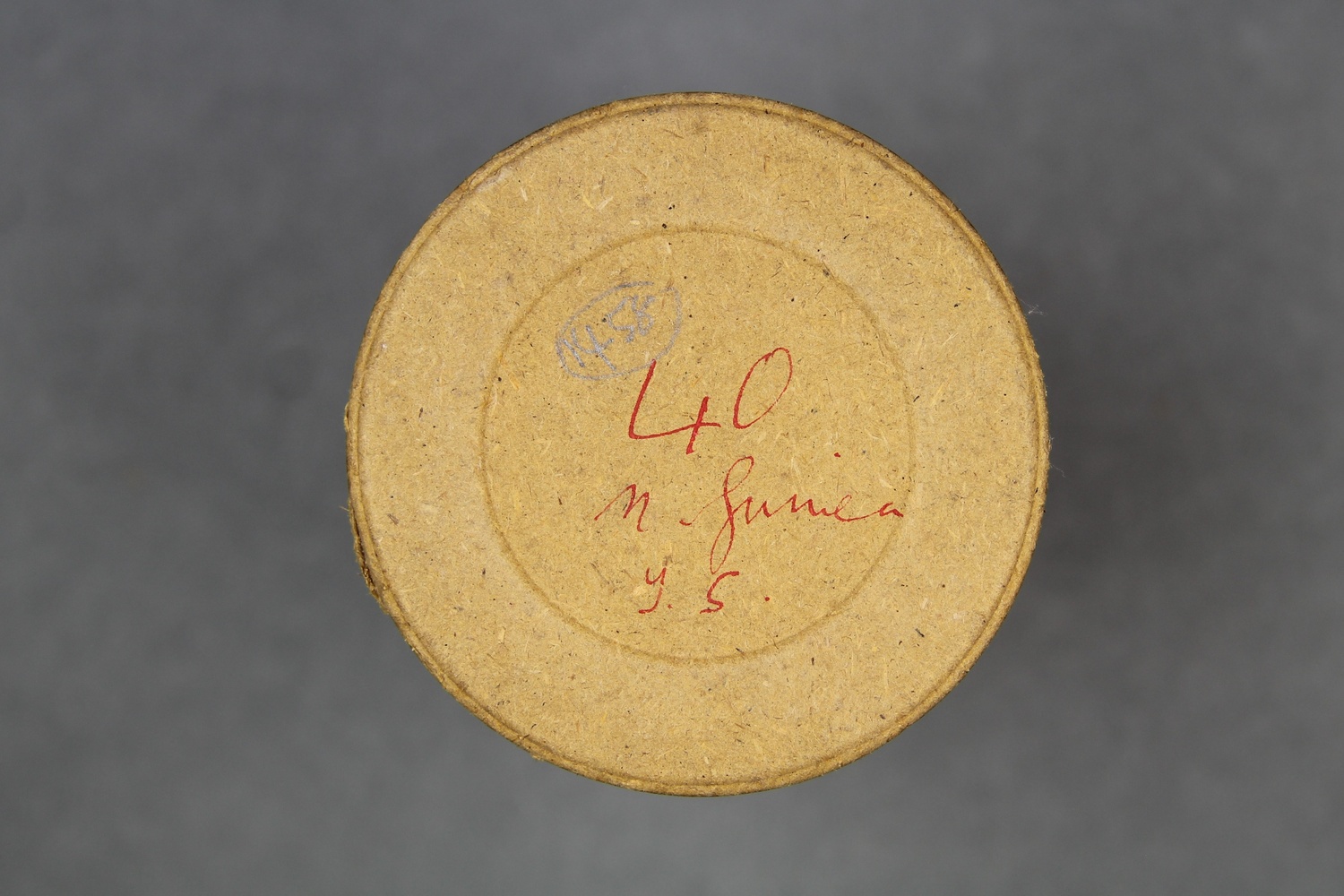     |
June 1898
On 1 June, Ray took the phonograph to Musgrave’s house in the afternoon and met “the Koitapu [Koitabu] boy” who was to instruct him (Ray 1898–1899:46). This may have been Ahuia Ova, a Koitabu man with whom Ray would work in July. Ahuia was described as being in “Government service” (Ray 1907:355), so whilst he was noted as working for Ballantine in July (Ray 1898–1899:74), he may have met Ray at Musgrave’s house on 1 June. He is discussed further below.
Central District
Haddon, Ray, Seligmann, and Wilkin left Port Moresby on 2 June for a two week trip to Rigo district, today part of Central Province. Their first stop was the village of Gaile (Gaire, Kaile, Tava Tava) where they slept on board the ship (Haddon 1901:207). Haddon noted that Gaile was at the western edge of the Rigo district (1946:168). The following day they sailed to Kapakapa (Gabagaba, Siruwai). Wilkin and Seligmann stayed in Kapakapa whilst Ray and Haddon walked to the LMS mission station at Vatorata (Vatororuata) to have tea with Dr Lawes, the missionary (1901:208). William George Lawes (1839–1907) was an English missionary for the London Missionary Society, and the first permanent European resident of this part of the country. Haddon noted that Lawes was translating the Bible into Motu. Whilst there, they met Albert English, the Government Agent for Rigo (1901:210). Haddon (1946:168) noted that the LMS mission station at Vatorata was “about two miles inland” from Kapakapa, and the government station of Rigo another 1¼ miles inland from there. There are two cylinders that were probably recorded on this visit, or on their return visit on 15 June: C80/1463 is labelled “Hymns at Vatorata”, and C80/1479 is labelled “Matth 5 in Motu by Dr Lawes”. Unfortunately, Dr Lawes’s Motu rendition of Matthew 5, the Sermon on the Mount, could not be digitised due to cylinder damage.
Hula
During 4–15 June, the team stayed in and around the village of Hula (Bulaa). Haddon noted that during their stay there, “Ray gave several phonograph demonstrations and recorded some of the local songs. The natives were never tired of listening to the machine, and fully appreciated singing into it, and were very delighted at hearing their songs repeated by it” (Haddon 1901:234). The Hula language is mentioned on a total of eleven cylinders: C80/1459, C80/1460, C80/1461, C80/1462, C80/1463, C80/1464, C80/1465, C80/1466, C80/1467, C80/1468, C80/1481.
Haddon, Ray, Wilkin, and Seligmann stayed at the LMS station just up at the coast from the village of Hula at Irupara (Haddon 1901:211). The following day, the local plantation manager, “German Harry,” H. Fechtmann (Ray 1898-1899:48),2In the Annual Report for British New Guinea July 1896-July 1897, it is noted that H Fechtmann took Gima, Chief of Hula, to the magistrate for “Damage to dingey” on 05 August 1896. Judgement was made in Gima’s favour. ARBNG 1898:54. https://nla.gov.au/nla.obj-86158653/view?sectionId=nla.obj-89729749&partId=nla.obj-86170673#page/n92/mode/1up took them by buggy “down the Hood peninsula, through the villages of Aruauna, Babaka, Kamali, to the very large and important village of Kalo” (Haddon 1901:212). Kalo is on the right bank of the mouth of the Vanigela or Wanigela River (Kemp Welch River).
On 5 June, Seligmann recorded in his journal that “Ray played with the phonograph in the evening, results practically nil” (quoted in Clayton 1996:70). However, Ray noted of the same evening, “those assembled sang a hymn, (not yet printed) which was recorded and reproduced to great delight of audience. Then a girl Takai sung a hymn (No. 38 in book) which was also recorded” (Ray 1898–1899:50).
On 6 June, they walked with English, the Government Agent, who had followed them to Hula, to the village of Babaka, “quite 4½ miles inland from Hula” to watch some dances and displays (Haddon 1898–1899:105). They were accompanied by “several boys and a couple of girls who carried our bags and cameras, and escorted by four native police and a corporal” (Haddon 1898–1899:105). At Babaka, they met a man who “has the reputation of being a successful dugong fisher and a great blackguard; the tattooing on his back shows that he has also taken human life” (Haddon 1901:214).
Later that day, Ray noted exhibiting the phonograph to the police, presumably the same men who had accompanied them to Babaka, and recording “God Save the Queen by Takai” (Ray 1898–1899:50). We can link this with the cylinder C80/1462 which is labelled “God Save the Queen.”
On 7 June they visited the village of Keapara or Kerepunu, on the eastern side of the Hood Lagoon (Haddon 1901:219), and the adjoining village of Alukune or Harukune, staying there for one night before returning to the mission house at Hula.
On 9 June, they spent a quiet day at the mission in Hula, doing some “anthropological measurements” and photographing the process of tattooing. “In the evening Ray phonographed 3 native songs in the school-house” (Haddon 1898–1899:114). Ray noted that he obtained 3 records, “a Lekuleku (ballad), a song sung by men when fishing for dugong, and a hunting song sung when hunting Kangaroo” (Ray 1898–1899:58).
Three of the Hula cylinders feature lekuleku: C80/1459, C80/1467, C80/1481; it is not clear which this one was. According to Kolia, a leku was a “war song” (1975:187); he noted that the word was from the Balawaia language, spoken in the Hula region, but considered a Sinaugoro dialect. Two cylinders were labelled “Dugong Fisher’s song. Hula”, C80/1464 and C80/1465. There is only one song noted as relating to kangaroo hunting, C80/1468 Kangaroo Hunting Song, so it is likely that this cylinder was recorded on 9 June. Ray noted in his journal for 10 June that he obtained the words of the three songs recorded the previous day (Ray 1898–1899:59).
On 10 June, Ray discussed “the structure of the dialects of Bulaa, Keapara (Kerepunu) and Galoma … with Kima, the intelligent chief of Hula” (Ray 1899:219). Ray noted in his diary that Kima “wished to hear ‘white man’s song’” so Ray played him Old Kentucky Home on the phonograph, “afterwards persuaded him to sing some Lekuleku into the machine” (Ray 1898–1899:59). Kima, also called Gima, is noted as the performer of the lekuleku on cylinder C80/1459.
J. A. Blayney, the Resident Magistrate of Central District, noted that Gima, “chief of Hula” gave him information on population and deaths caused by an outbreak of dysentery in the Hula area in July 1898 (Blayney 1898:90). He also noted that, as one of three Village Constables for Hula 1897–1898, Gima received pay in the form of 40 shillings’ worth of trade goods (1898:92) Oram also mentioned Gima, noting that Gima Leva was appointed as village headman and then constable of Hula village by the government in 1890, and held this position until his death in 1929 (Oram 1968:256). He noted that Hula people still spoke of Gima’s “commercial activities” in the 1960s (1968:257).
In his journal entry for 10 June, Ray lists the titles of four children’s songs. It is not clear whether recordings were made of these songs.
Children’s songs
A. Korikini kapa rauri rauri masire agiana kirokoana karigamu ai
B. Vegoli kiniketo keto
C. Kinimale kinimale legalega malawa ketoketo ana olio a melauli melauli polaia polai
D. Toitoi tupumu geanai nurapakau (Ray 1898–1899:59)
On 13 June, Ray noted that Kima visited him, and he took the phonograph to the school room, where “[T]he women sang the Parea Marina, and the ‘Ko Mari’ as they have named the Phono, recorded and reproduced it”, and he “obtained another Lekuleku and a Canoe song from the men” (Ray 1898–1899:62-63). It is not clear whether the recording of the women’s song survived, but it is likely that the men’s songs referred to were recorded on cylinder C80/1467 Canoe Song and Lekuleku Hula.
On 14 June, the day before the expedition party left Hula, Ray noted that they were busy packing in the morning, “but got photo of children listening singing to phono.” (Ray 1898–1899:63). This must refer to the two photographs in the Cambridge Museum of Archaeology and Anthropology that show a phonograph in use in Hula. He also noted that he “got the words of Parea Marina from one of the women who sang”, although he was “much interrupted by a very noisy crowd suggesting the words” (Ray 1898–1899:63).
| British Library shelfmark | Recording title | Performer name | Recording location | Recording date | Content description | Performer description | Recording notes | Languages | Genre | Recordist | Recording length | Recording trip | Description of cylinder | Collection title | Cylinder location | Images of cylinder containers / documentation | Related print publication: | Related print publication: | Related print publication: | Related print publication: | Related print publication: | Related print publication: |
|---|---|---|---|---|---|---|---|---|---|---|---|---|---|---|---|---|---|---|---|---|---|---|
| C80/1459 | Lekuleku by Gima, Chief of Hula | Gima (singer, male, chief of Hula) | Hula, Central District, British New Guinea | 10 June 1898 | 1. Indecipherable announcement. 2. Unaccompanied male vocal solo. "On 10 June, Ray noted in his diary that he persuaded [Gima] to sing some Lekuleku into the machine” (Ray 1898–1899:59). A leku was a war song according to Kolia (1975:187). | Reasonable quality recording with improving signal strength, but also with surface noise. | Hula | Field recordings; War song | Ray, Sidney | 2'44" | Alfred Cort Haddon 1898 Expedition, British New Guinea | Brown wax cylinder | Alfred Cort Haddon 1898 Expedition (Torres Strait and British New Guinea) Cylinder Collection | British Library |   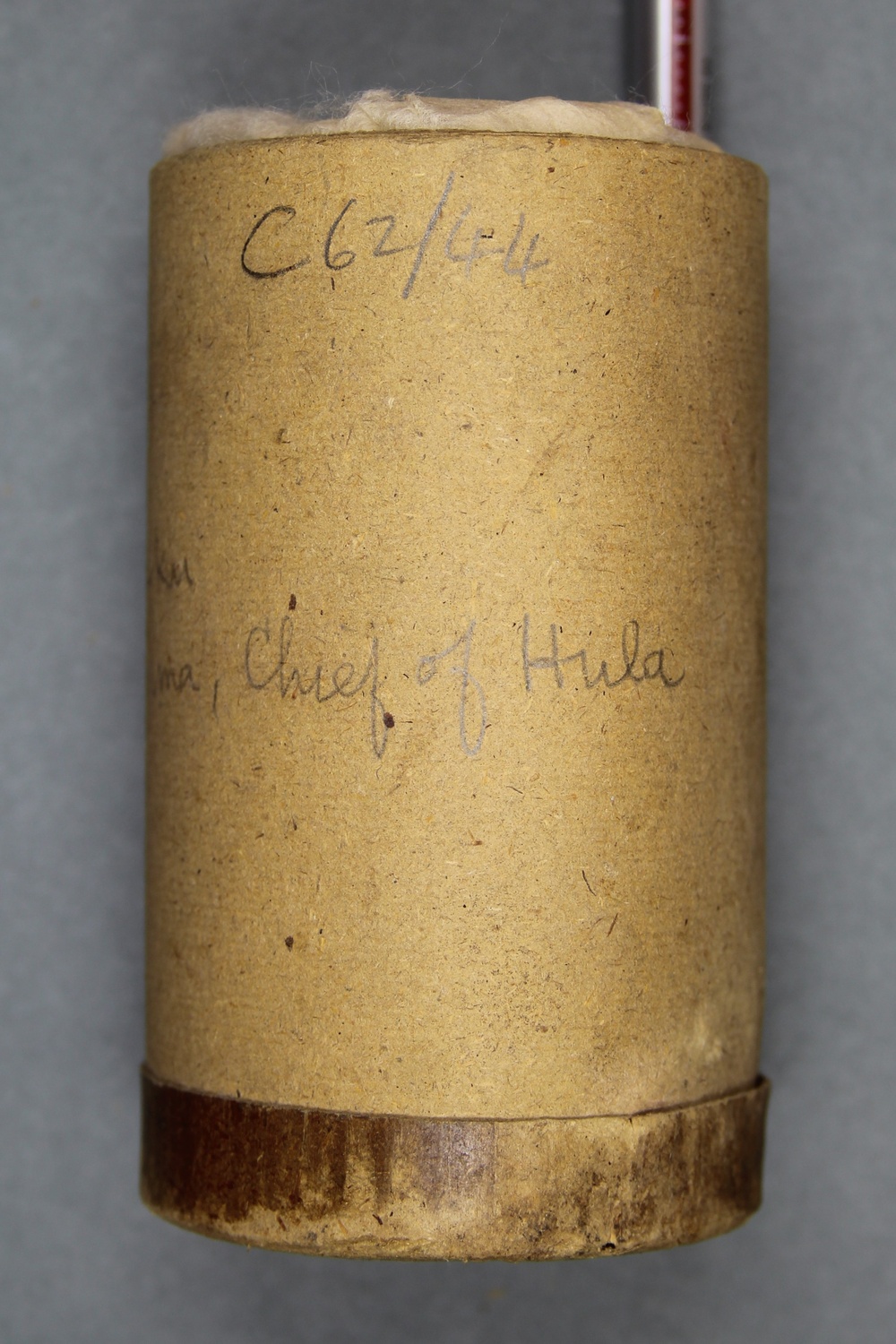    | Kolia, John. 1975. A Balawaia Grammar Sketch and Vocabulary. In Studies in Languages of Central and South-East Papua, edited by Tom E. Dutton, 107–226. Pacific Linguistics, C 19. Canberra: Australian National University. | ||||||
| C80/1460 | Dirge of Hula Women | Unidentified (male chorus) | Hula, Central District, British New Guinea | 4 June 1898 – 15 June 1898 | 1. Announcement: "[indecipherable] song, Hula." 2. Unaccompanied vocal group with male solo. 3. Unaccompanied vocal group. | Reasonable quality recording but with surface noise due to mould on cylinder. | Hula | Field recordings, Laments | Ray, Sidney | 3'19" | Alfred Cort Haddon 1898 Expedition, British New Guinea | Light brown wax cylinder | Alfred Cort Haddon 1898 Expedition (Torres Strait and British New Guinea) Cylinder Collection | British Library |       | |||||||
| C80/1461 | Hymn Hula | Takai (singer, female) | Hula, Central District, British New Guinea | 4 June 1898 – 15 June 1898 | 1. Announcement: "Hymn, sung by Takai, [indecipherable]. 2. Female and male vocal solo singing in harmony. 3. Unaccompanied female vocal solo. | Reasonable quality recording but with surface noise due to mould on cylinder. | Hula | Field recordings; Hymns | Ray, Sidney | 2'44" | Alfred Cort Haddon 1898 Expedition, British New Guinea | Light brown wax cylinder | Alfred Cort Haddon 1898 Expedition (Torres Strait and British New Guinea) Cylinder Collection | British Library |  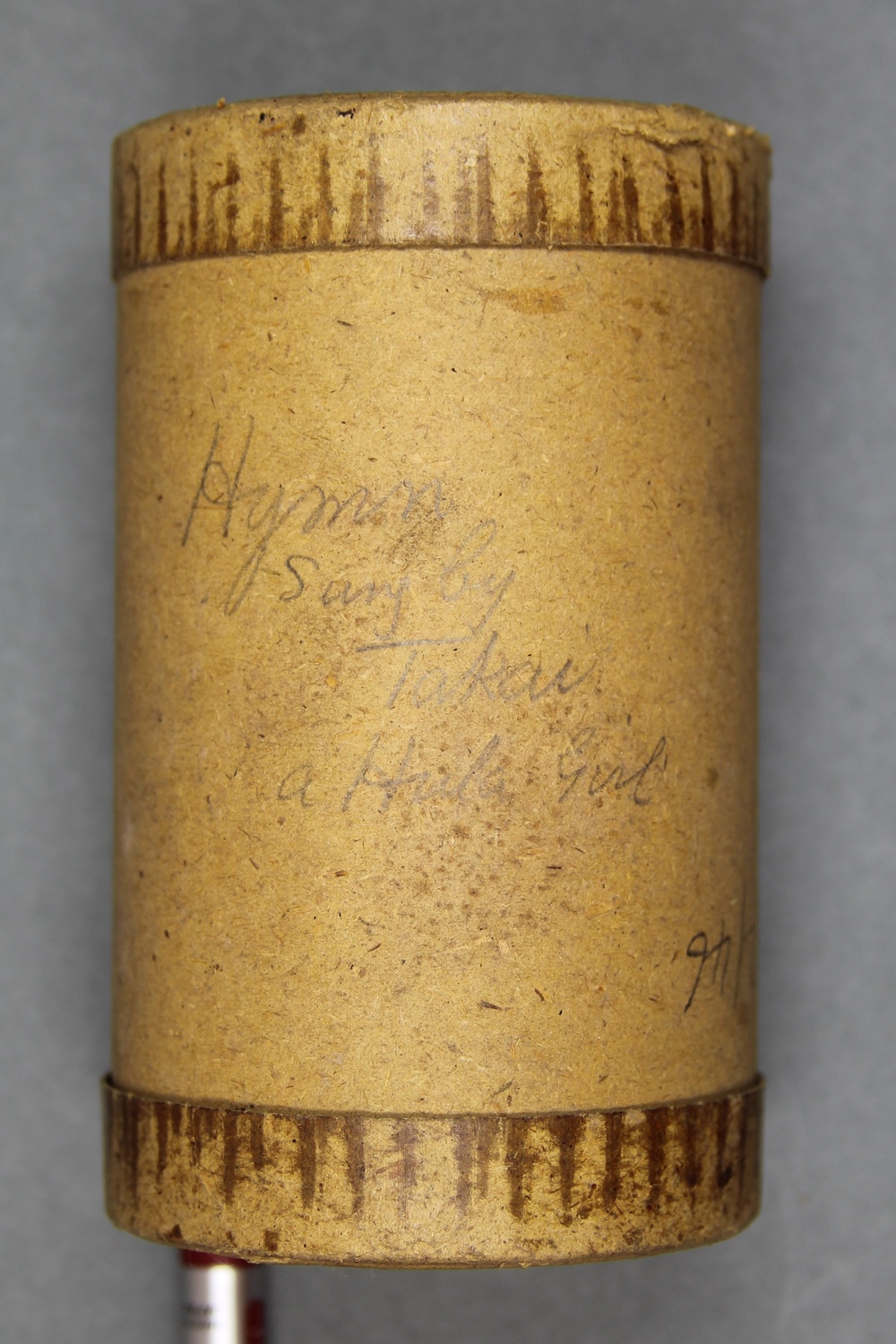     | |||||||
| C80/1462 | God save the Queen Hula | Takai (singer, female) | Hula, Central District, British New Guinea | 6 June 1898 | 1. Unaccompanied vocal group. On 6 June, Ray noted recording “God Save the Queen by Takai” (Ray 1898–1899:50) (British national anthem). | Reasonable quality recording but with some speed fluctuation and surface noise. | Hula and/or English | Field recordings; National anthems | Ray, Sidney | 1'56" | Alfred Cort Haddon 1898 Expedition, British New Guinea | Light brown wax cylinder | Alfred Cort Haddon 1898 Expedition (Torres Strait and British New Guinea) Cylinder Collection | British Library |       | |||||||
| C80/1463 | Hymns at Vatorata | Unidentified (female chorus) | Hula, Central District, British New Guinea? | 3 June 1898 – 15 June 1898 | 1. Indecipherable announcement. 2. Female vocal group. | Poor quality recording with weak signal and heavy surface noise due to mould on cylinder. | Hula | Field recordings; Hymns | Ray, Sidney | 2'41" | Alfred Cort Haddon 1898 Expedition, British New Guinea | Light brown wax cylinder | Alfred Cort Haddon 1898 Expedition (Torres Strait and British New Guinea) Cylinder Collection | British Library |  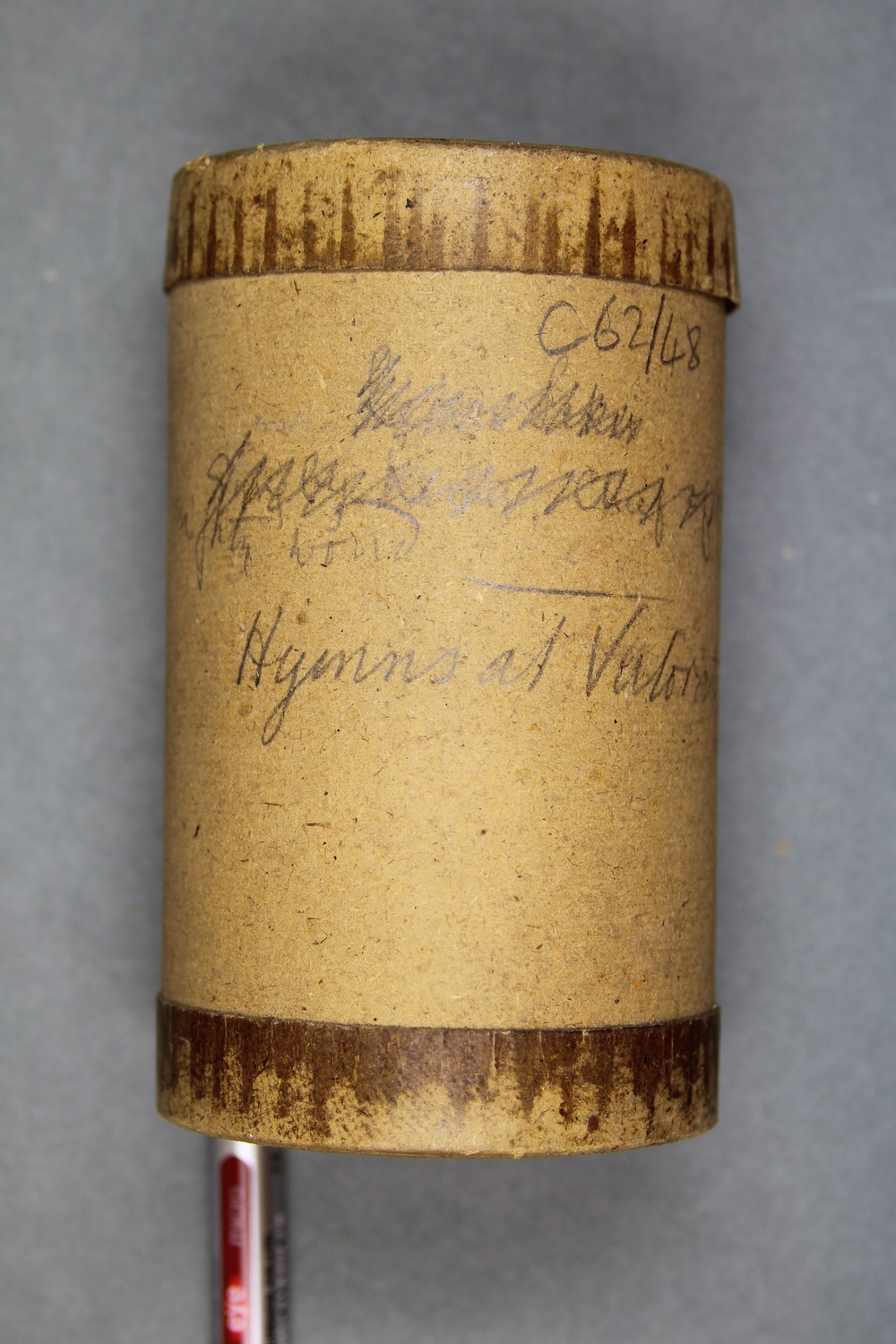   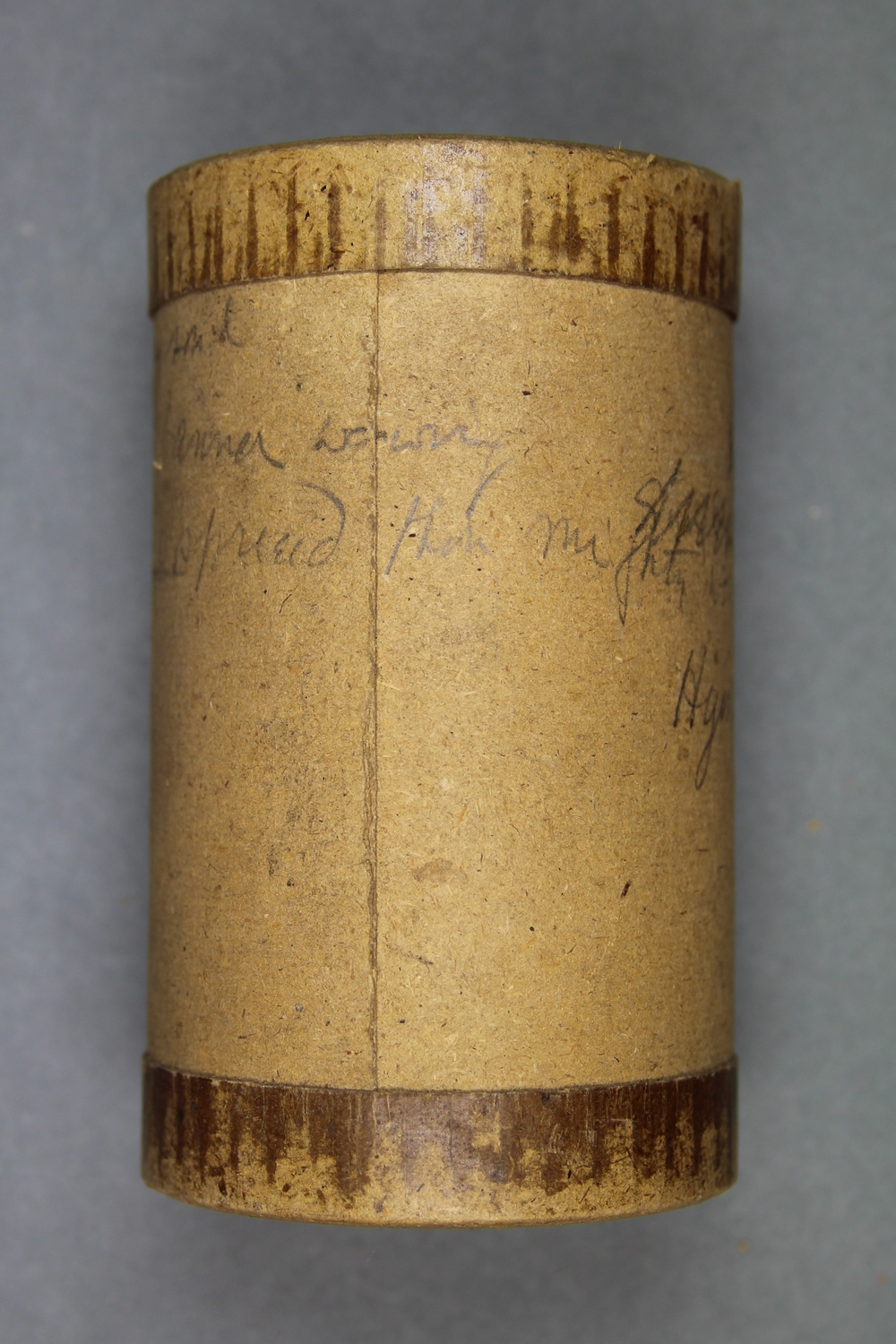  | |||||||
| C80/1464 | Dugong Fishers' Song [1] | Unidentified (male chorus) | Hula, Central District, British New Guinea | 4 June 1898 – 15 June 1898 | 1. Announcement: "Dugong fishers' song. Hulaa." 2. Unaccompaned male vocal group. | Reasonable quality recording but with surface noise due to patches of mould on cylinder. | Hula | Field recordings; Dugong fishing songs | Ray, Sidney | 2'00" | Alfred Cort Haddon 1898 Expedition, British New Guinea | Light brown wax cylinder | Alfred Cort Haddon 1898 Expedition (Torres Strait and British New Guinea) Cylinder Collection | British Library |       | |||||||
| C80/1465 | Dugong Fishers' Song [2] | Unidentified (male chorus) | Hula, Central District, British New Guinea | 4 June 1898 – 15 June 1898 | 1. Announcement: "Dugong Fishers' Song. Hulaa." 1. Unaccompanied male vocal group. | Reasonable quality recording but with surface noise due to patches on mould on cylinder. | Hula | Field recordings; Dugong fishing songs | Ray, Sidney | 2'10" | Alfred Cort Haddon 1898 Expedition, British New Guinea | Light brown wax cylinder | Alfred Cort Haddon 1898 Expedition (Torres Strait and British New Guinea) Cylinder Collection | British Library | 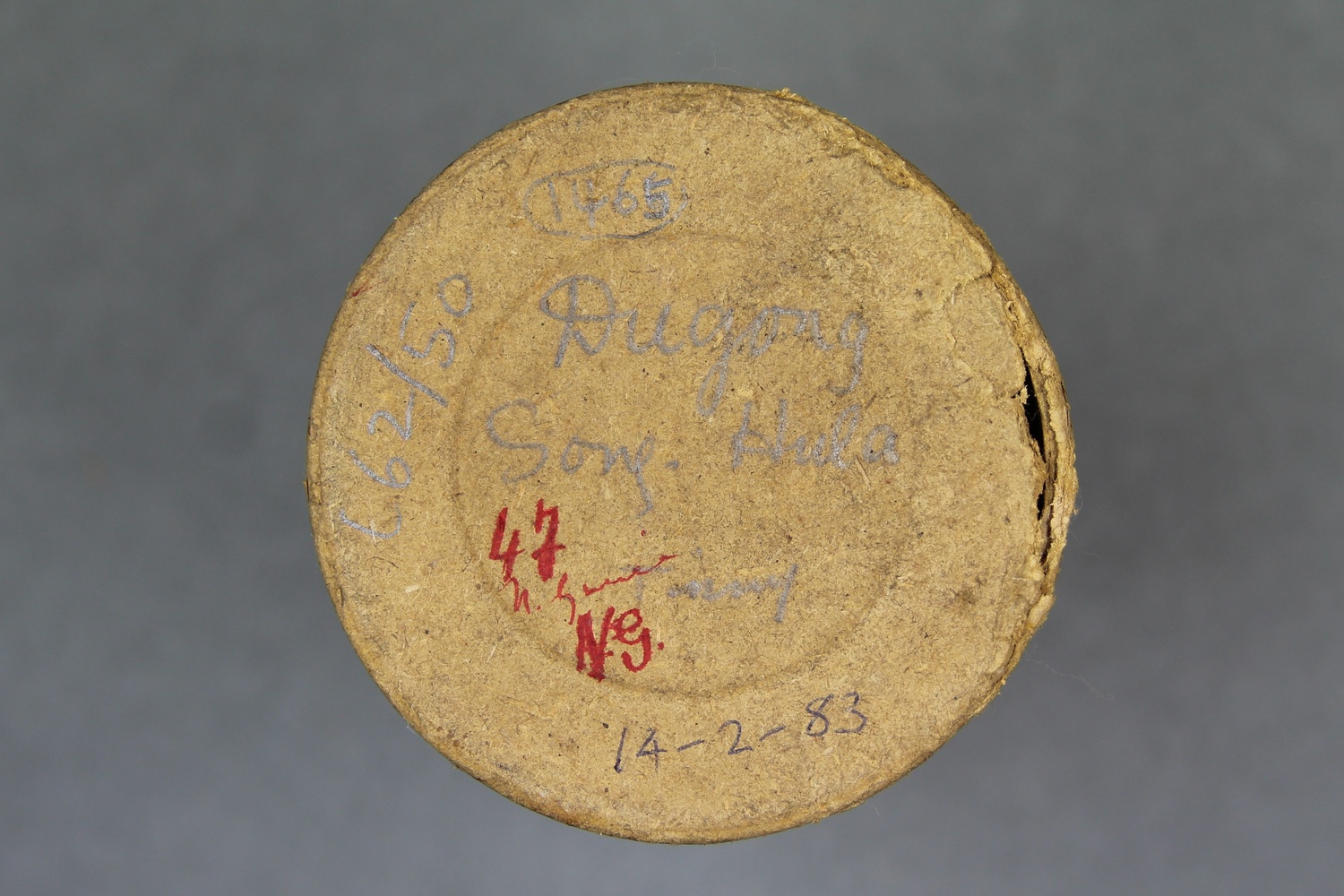      | |||||||
| C80/1466 | Hula Hymn | Unidentified (male chorus) | Hula, Central District, British New Guinea | 4 June 1898 – 15 June 1898 | 1. "[indecipherable] song of Hula, British New Guinea." 2. Mixed vocal group, singing version of 'Onward Christian Soldiers' in harmony. | Reasonable quality recording but with some surface noise. | Hula | Field recordings; Hymns | Ray, Sidney | 2'32" | Alfred Cort Haddon 1898 Expedition, British New Guinea | Light brown wax cylinder | Alfred Cort Haddon 1898 Expedition (Torres Strait and British New Guinea) Cylinder Collection | British Library |       | |||||||
| C80/1467 | Canoe Song and Leku Leku Hula | Unidentified | Hula, Central District, British New Guinea | 13 June 1898 | 1. Indecipherable announcement. A leku was a war song according to Kolia (1975:187). | Hula | Field recordings; Canoe song; War song | Ray, Sidney | 2'30" | Alfred Cort Haddon 1898 Expedition, British New Guinea | Light brown wax cylinder | Alfred Cort Haddon 1898 Expedition (Torres Strait and British New Guinea) Cylinder Collection | British Library |       | Kolia, John. 1975. A Balawaia Grammar Sketch and Vocabulary. In Studies in Languages of Central and South-East Papua, edited by Tom E. Dutton, 107–226. Pacific Linguistics, C 19. Canberra: Australian National University. | |||||||
| C80/1468 | Kangaroo Hunting Song | Unidentified (singer, male) | Hula, Central District, British New Guinea | 9 June 1898 | 1. Announcement: "A hunting son, Hula." 2. Unaccompanied male vocal solo. “In the evening Ray phonographed 3 native songs in the school-house” (Haddon 1898–1899:114). Ray noted that he obtained 3 records, “a Lekuleku (ballad), a song sung by men when fishing for dugong, and a hunting song sung when hunting Kangaroo” (Ray 1898–1899:58). | Reasonable quality recording. | Hula | Field recordings; Wallaby hunting song | Ray, Sidney | 1'56" | Alfred Cort Haddon 1898 Expedition, British New Guinea | Light brown wax cylinder | Alfred Cort Haddon 1898 Expedition (Torres Strait and British New Guinea) Cylinder Collection | British Library | 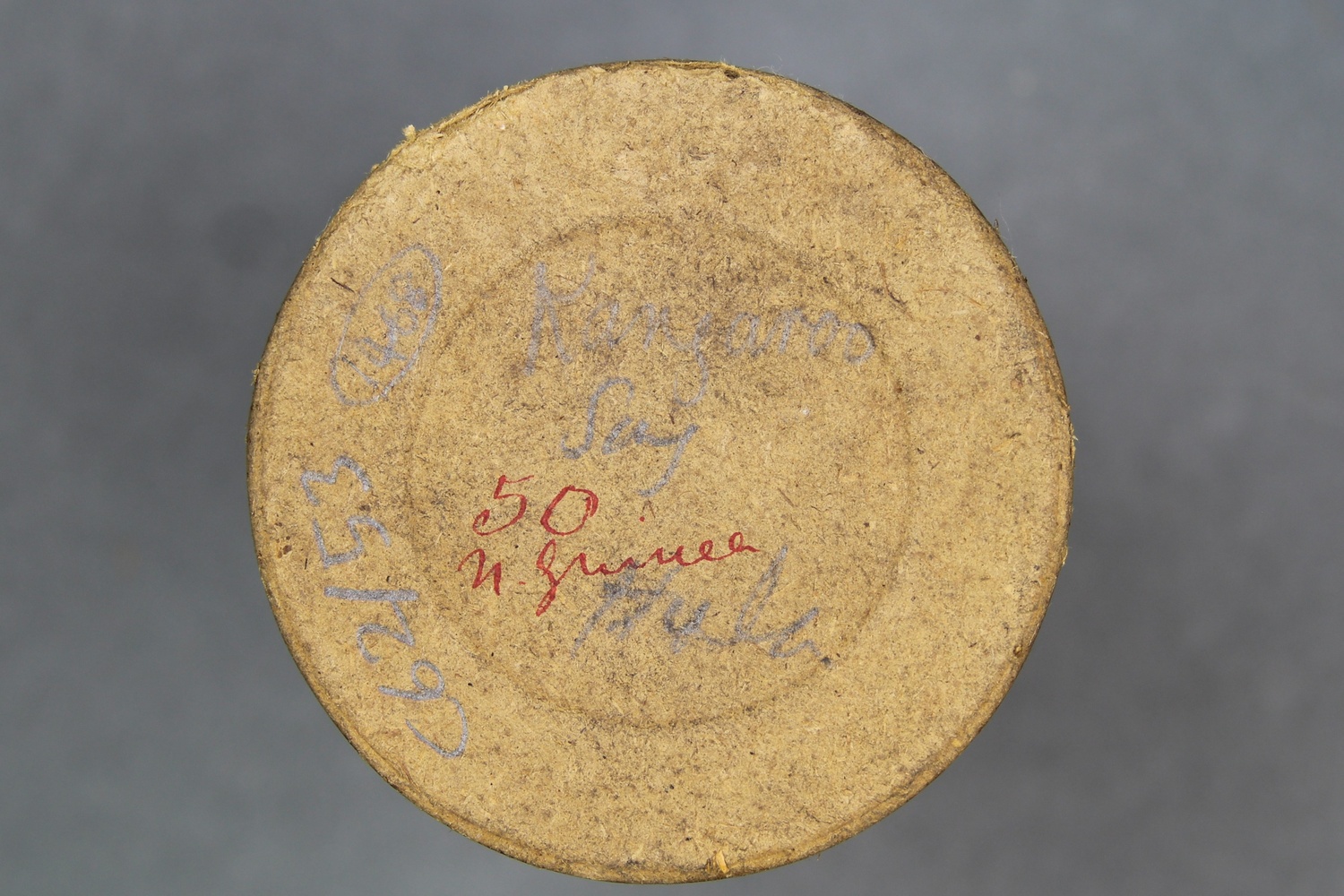      | |||||||
| C80/1481 | Lekuleku Hula | Unidentified (female chorus) | Hula, Central District, British New Guinea | 4 June 1898 – 15 June 1898 | 1. Announcement: "[indecipherable] Hula." 2-3. Unaccomapanied female vocal group. A leku was a war song according to Kolia (1975:187). | Poor quality recording with heavy surface noise and weak signal. | Hula | Field recordings; War song | Ray, Sidney | 2'30" | Alfred Cort Haddon 1898 Expedition, British New Guinea | Light brown wax cylinder | Alfred Cort Haddon 1898 Expedition (Torres Strait and British New Guinea) Cylinder Collection | British Library | 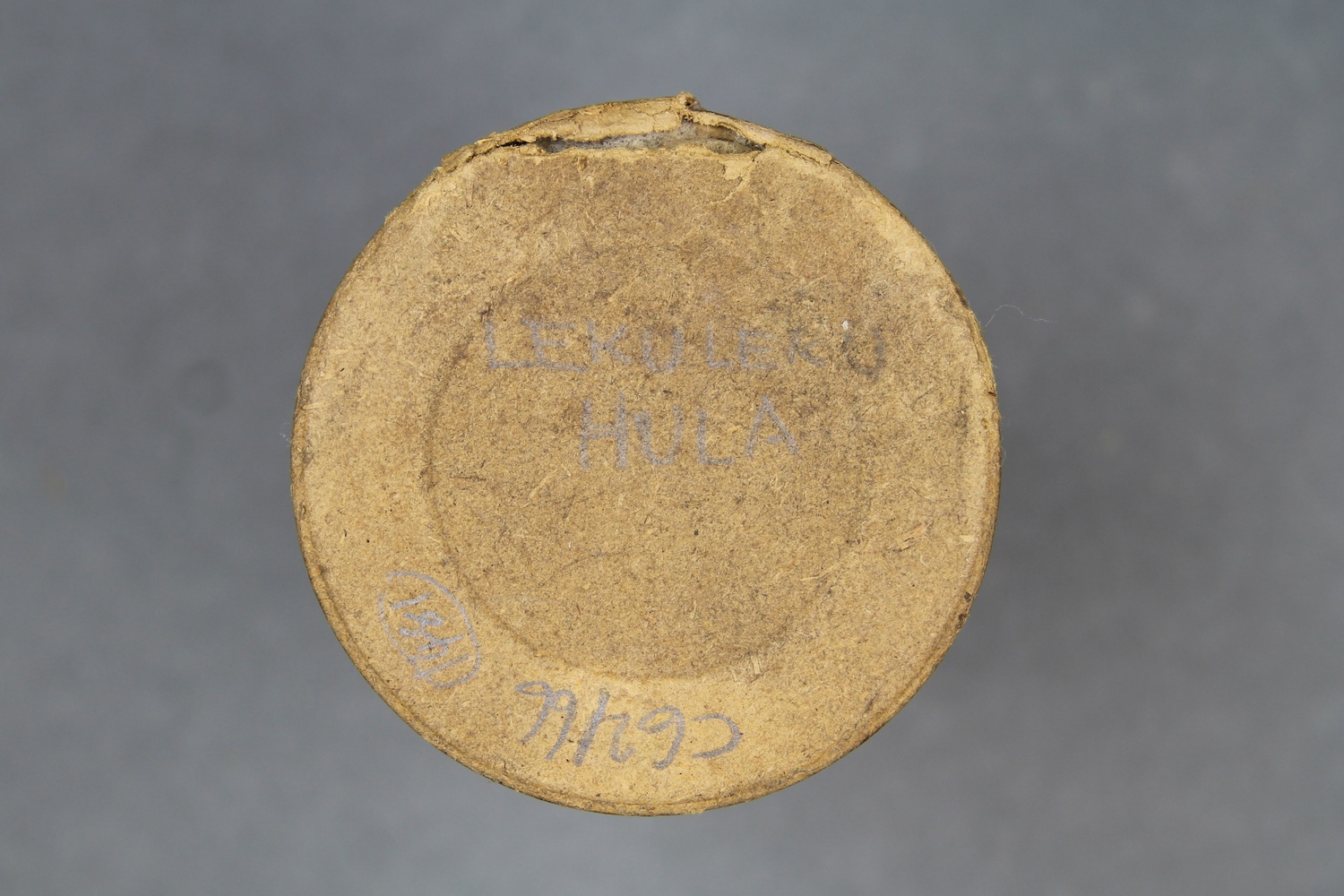 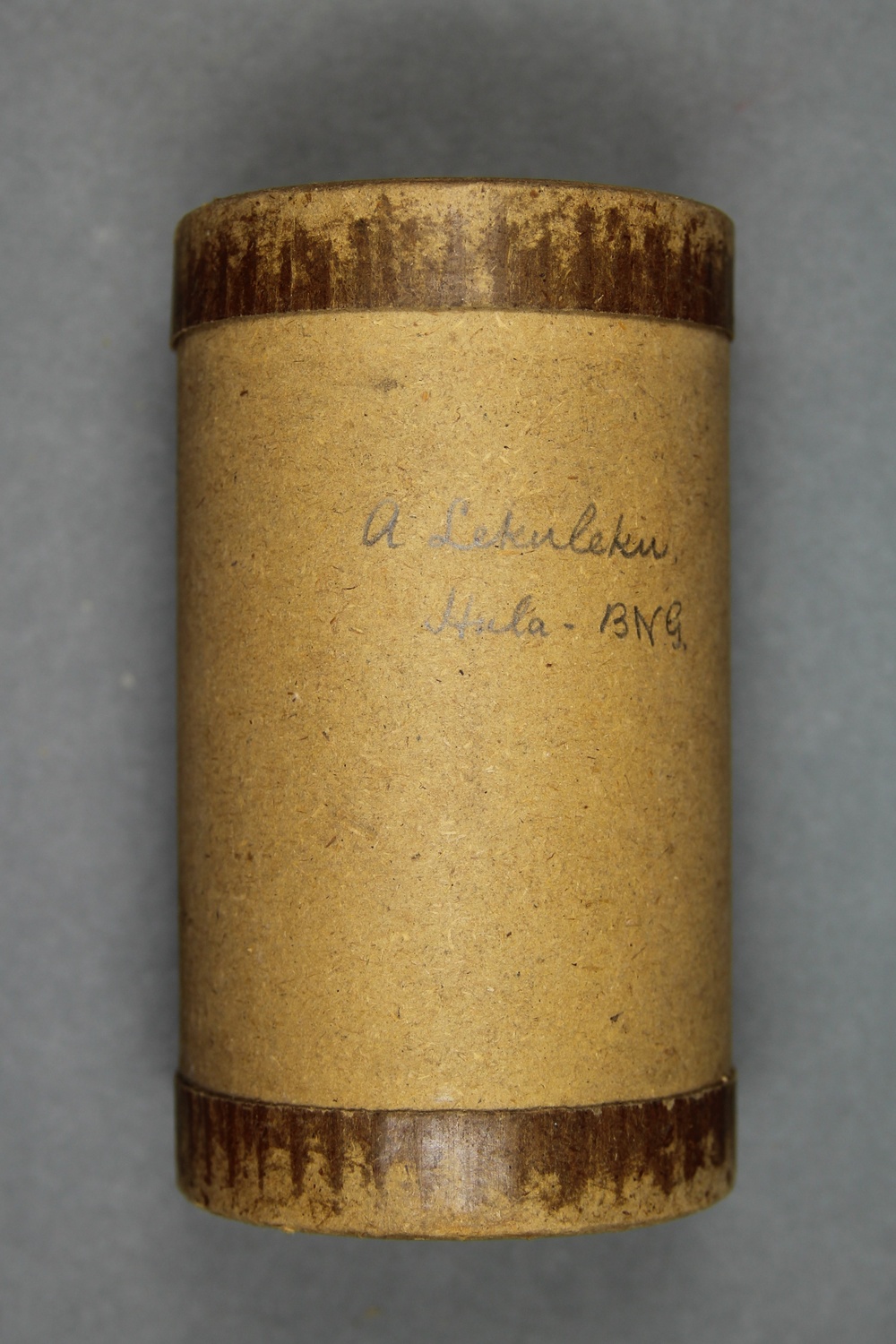     | Kolia, John. 1975. A Balawaia Grammar Sketch and Vocabulary. In Studies in Languages of Central and South-East Papua, edited by Tom E. Dutton, 107–226. Pacific Linguistics, C 19. Canberra: Australian National University. |
Rigo
On 15 June, Haddon, Ray, Wilkin, and Seligmann left Hula to return to Port Moresby, stopping at Kapakapa so that they could visit Dr and Mrs Lawes in Vatorata. They visited the “small neighbouring Ikoro village of Tagama Keketo” and then returned to stay at Vatorata where “Ray exhibited the phonograph in the schoolhouse to the students, and continued his philological studies” (Haddon 1901:234). Ray noted that he “Took several records, a canoe song (aona) not very successful as students seemed ashamed of singing it, and cylinders were very bad. Some hymns were sung + Dr Lawes read into the phono” (Ray 1898–1899:63-64). It seems likely that the two cylinders C80/1463 Hymns at Vatorata and C80/1479 Matth 5 in Motu by Dr Lawes were recorded that evening. As noted above, Dr Lawes’s Motu rendition of Matthew 5, the Sermon on the Mount, could not be digitised due to cylinder damage.
On the following day they visited English’s plantation again, and the village of Gomoridobo, before returning to Kapakapa to sail on to Port Moresby.
The map below shows the order in which the expedition visited various locations in British New Guinea in May and June 1898, departing from Mer / Murray Island in the Torres Strait. Locations are approximate and may have changed over time.
Port Moresby
On 18 June the group left Port Moresby for a two-day trip on horseback to the Astrolabe Range, organised by Musgrave, the Government Secretary, and Ballantine, the Government Treasurer (Haddon 1901:236). There is no indication that they took the phonograph on this trip. They visited Boumana (Bomana), and slept at a village called Atsiamakara inhabited by “bush tribes” (1901:242), called Koiari by the Motu. They came back to Port Moresby “with a crowd of inland natives,” including a chief called Gewe, whom Ballantine had met in Sogeri. Once back in Port Moresby, they “investigated” these men by measuring and photographing them, and testing their eyesight (1901:245).
Haddon, Ray, and Wilkin stayed in Port Moresby from 20 June to 6 July; Seligmann left on 25 June “to visit Mr English at Rigo” (Haddon 1901:248). Notes on Seligmann’s solo travels are below.
Motu and Koita / Koitapu
Whilst in Port Moresby, Ray studied both the Motu and Koita languages; Koita was also known as Koitapu or Koitabu. Port Moresby was established on the traditional lands of the Motu and Koita people, and it is still recognised as their customary land. Motu is an Austronesian language, Koita is a non-Austronesian or Papuan language.
Haddon noted that during the last two days of their stay in Port Moresby, “Ray got hold of a very intelligent Koitapu boy and he learnt more from him relative to the language than he had been able to pick-up in the last 3 weeks” (Haddon 1898–1899:157). Ray noted that he went to Ballantine’s house early in the morning of 6 July to see Ahuia, “[a] very intelligent lad” who translated “Lawes’ sentences into Koitapu” (Ray 1898–1899:74); it is not clear what these sentences were. Later the same day, Ahuia came to visit Ray for more translation work, and that evening, Ahuia “spoke into Phono in Koitapu + sang Motu Hymn No 156” (Ray 1898–1899:74).3Niles notes that hymn 156 must be from the 1896 Motu hymnal which contained 204 hymns; the first two hymnals contained each fewer than 100 hymns (pers. comm.) Writing on the box of cylinder C80/1062 notes that the recording is of Koitapu sentences and Motu hymn 156, which indicates that Ahuia was the performer for this cylinder.
Ray noted working with another Koita man named Varia. He wrote that during his stay in Port Moresby, he “paid a good deal of attention to the Koita language, and by the kindness of the Hon. A. Musgrave, Government Secretary, was enabled to utilize the services of two Koita natives, Ahuia and Varia. The former was in Government service, and knew a little English. Both knew Motu …” (Ray 1907:355). When Seligmann visited Port Moresby in 1904, he also worked with Ahuia, who he referred to as Ahuia Ova, “the hereditary chief of the Hohodai Koita” (1910:ix, photograph of Ahuia on plate III).
Haddon wrote:
The villages of Port Moresby are composite in character, as two tribes, the Koitapu and Motu, live side by side, but apparently with extremely little mixture. There is no doubt that the Koitapu are the original inhabitants; they are allied to the Koiari and other inland tribes, and hence are a branch of the true Papuans—that is, the essentially narrowheaded indigenous population of New Guinea … The Koitapu are tillers of the soil, and the Motu are fisherfolks and potters … There are many differences between the Koitapu and Motu that point to a difference of origin. The language is markedly different; Dr. Lawes long ago pointed out that there, were very few words in common between these two tribes, and probably most, if not all, of these were borrowed. Ray, too, found that the affinities of the Koitapu language were with those of the true Papuan languages; while those of the Motu were unmistakably Melanesian. (Haddon 1901:249)
Haddon discussed the lakatoi (lagatoi) trading boats used in hiri, the “great trading voyages” undertaken by the Motu of the central district of British New Guinea (1901:248). The information recorded on the box and the announcement on the recording of cylinder C80/1456 identify it as a Lakatoi song. The Motu language is noted on this cylinder and also C80/1479, which was the rendition of Matthew 5 in Motu by Dr Lawes.
| British Library shelfmark | Recording title | Performer name | Recording location | Recording date | Content description | Performer description | Recording notes | Languages | Genre | Recordist | Recording length | Recording trip | Description of cylinder | Collection title | Cylinder location | Images of cylinder containers / documentation | Related print publication: | Related print publication: | Related print publication: | Related print publication: | Related print publication: | Related print publication: |
|---|---|---|---|---|---|---|---|---|---|---|---|---|---|---|---|---|---|---|---|---|---|---|
| C80/1062 | Koitapu sentences and Motu Hymn | Ahuia Ova (speaker, singer, male) | Port Moresby, British New Guinea | 6 July 1898 | 1. Announcement: "Koitapu sentences and Motu Hymn." 2. Solo male speech. 3. Unaccompanied male vocal solo. | Reasonable quality recording but with surface noise due to light mould on cylinder. | Koitabu and Motu | Field recordings; Speeches; Hymns | Ray, Sidney | 3'01" | Alfred Cort Haddon 1898 Expedition, British New Guinea | Brown wax cylinder | Alfred Cort Haddon 1898 Expedition (Torres Strait and British New Guinea) Cylinder Collection | British Library | 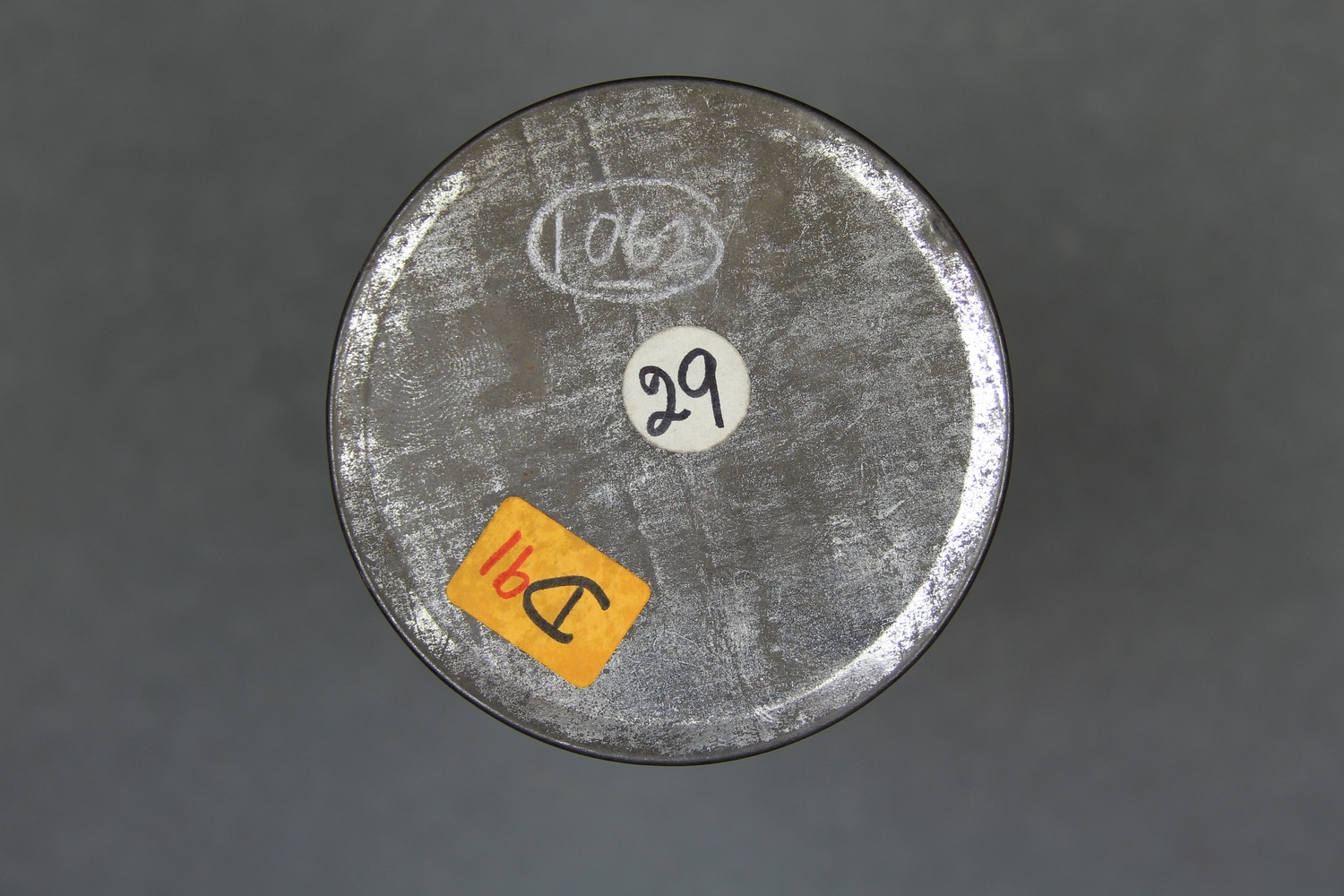 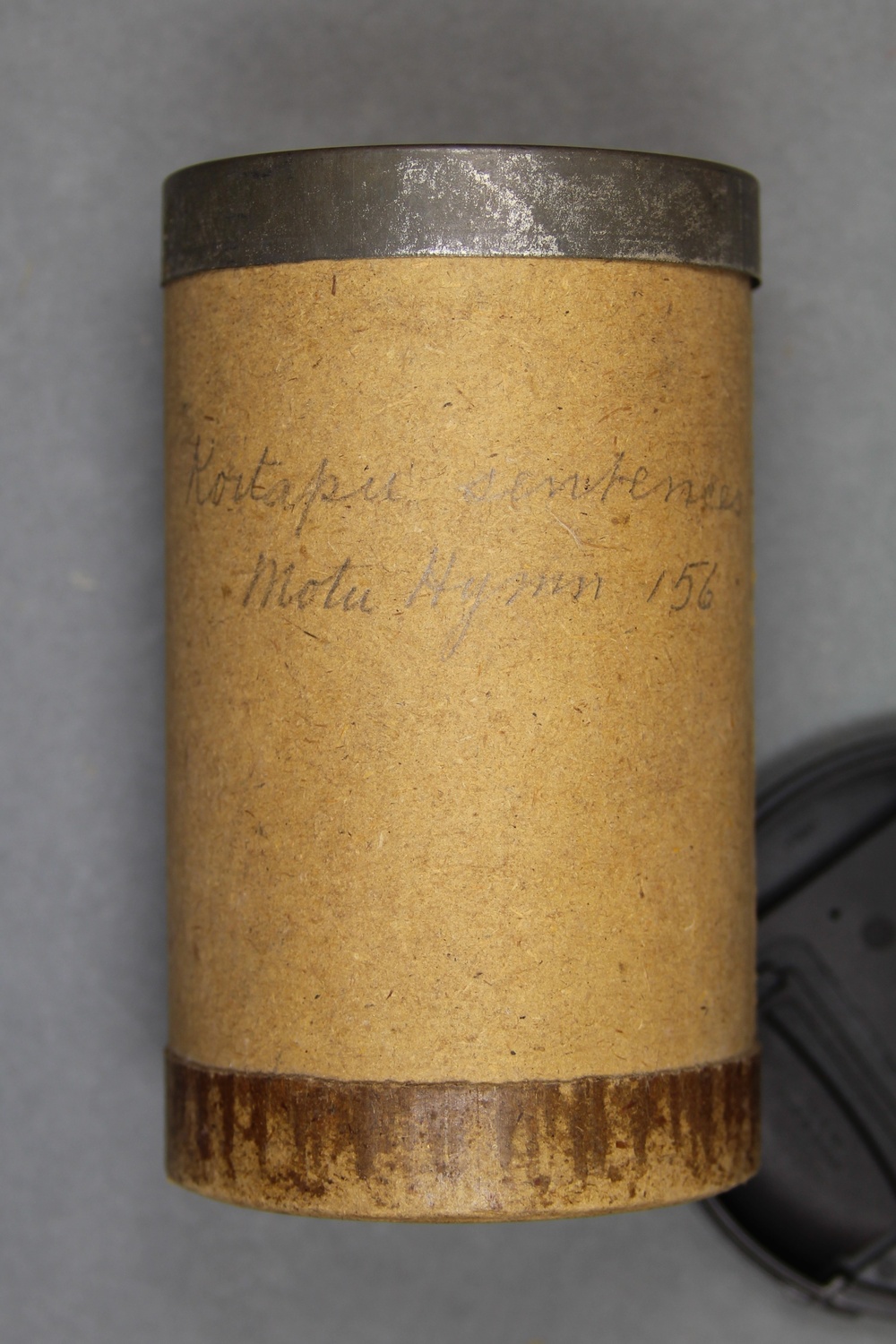 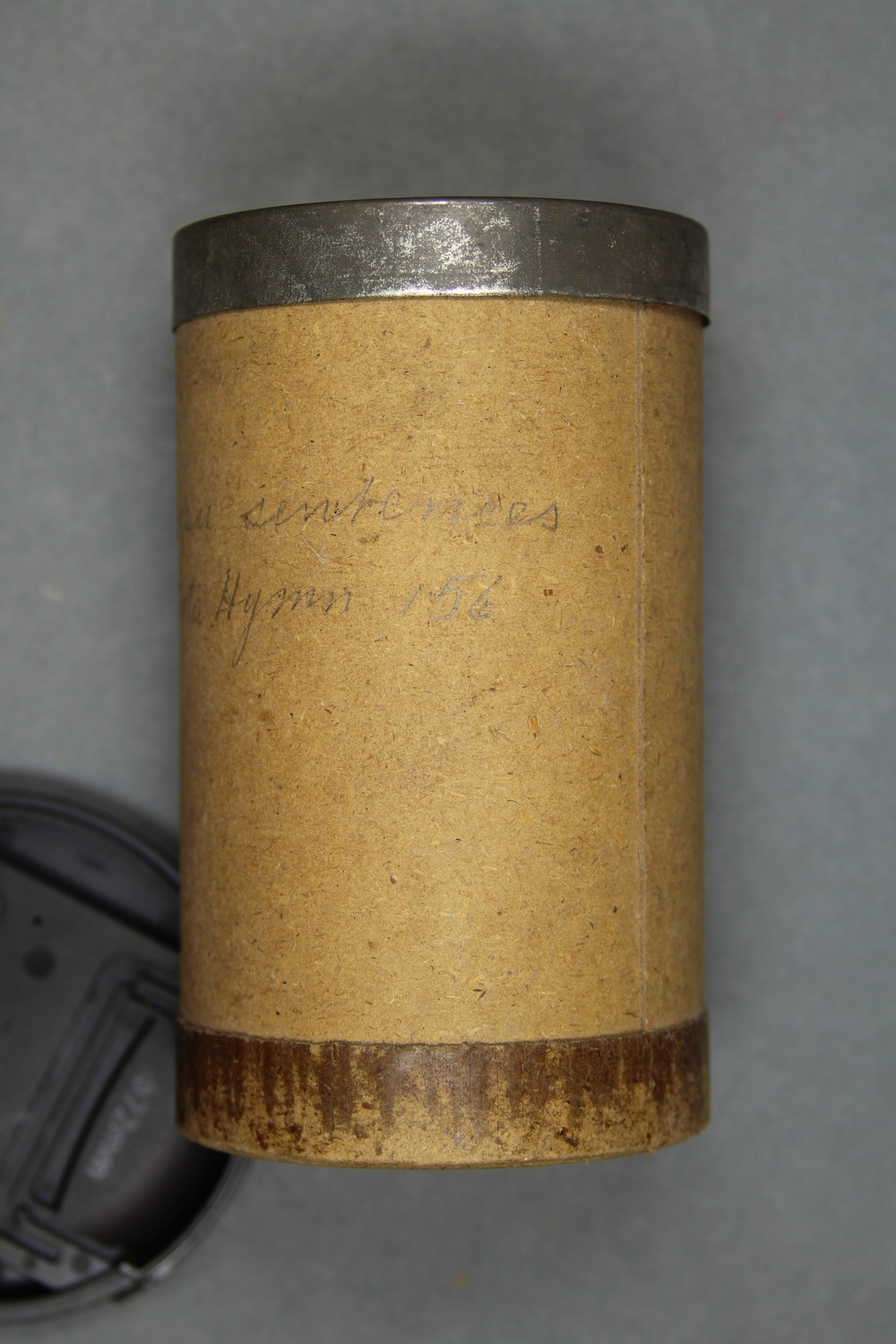    | |||||||
| C80/1456 | Lakatoi Song | Unidentified (male chorus) | Port Moresby, British New Guinea | 20 June 1898 – 6 July 1898 | 1. Announcement: "A Lakatoi Song." 2. Unaccompanied male vocal group. | Reasonable quality recording but with weak signal and surface noise. | Motu (archaic language) | Field recordings; Sailing; Trade | Ray, Sidney | 2'20" | Alfred Cort Haddon 1898 Expedition, British New Guinea | Brown wax cylinder | Alfred Cort Haddon 1898 Expedition (Torres Strait and British New Guinea) Cylinder Collection | British Library | 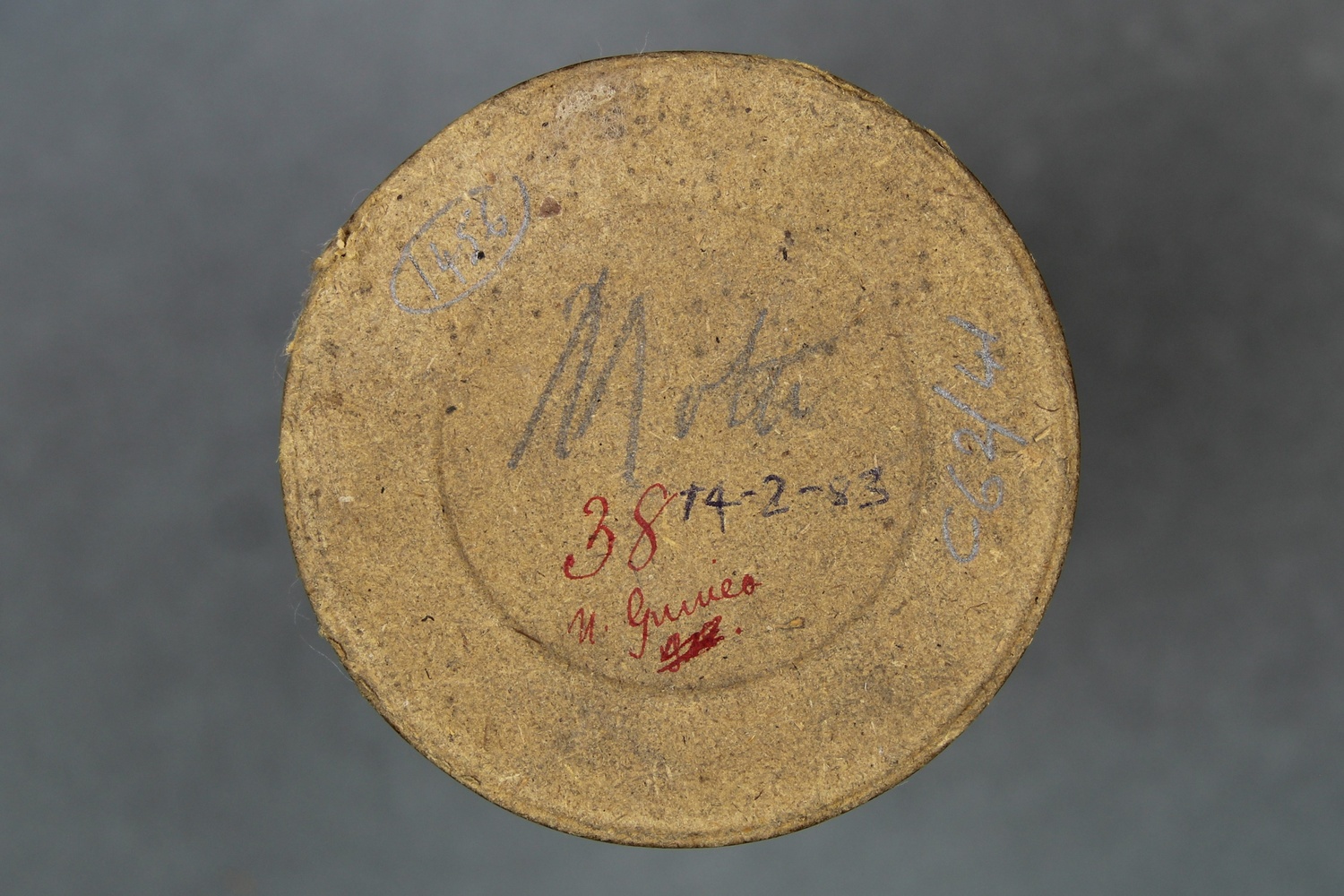 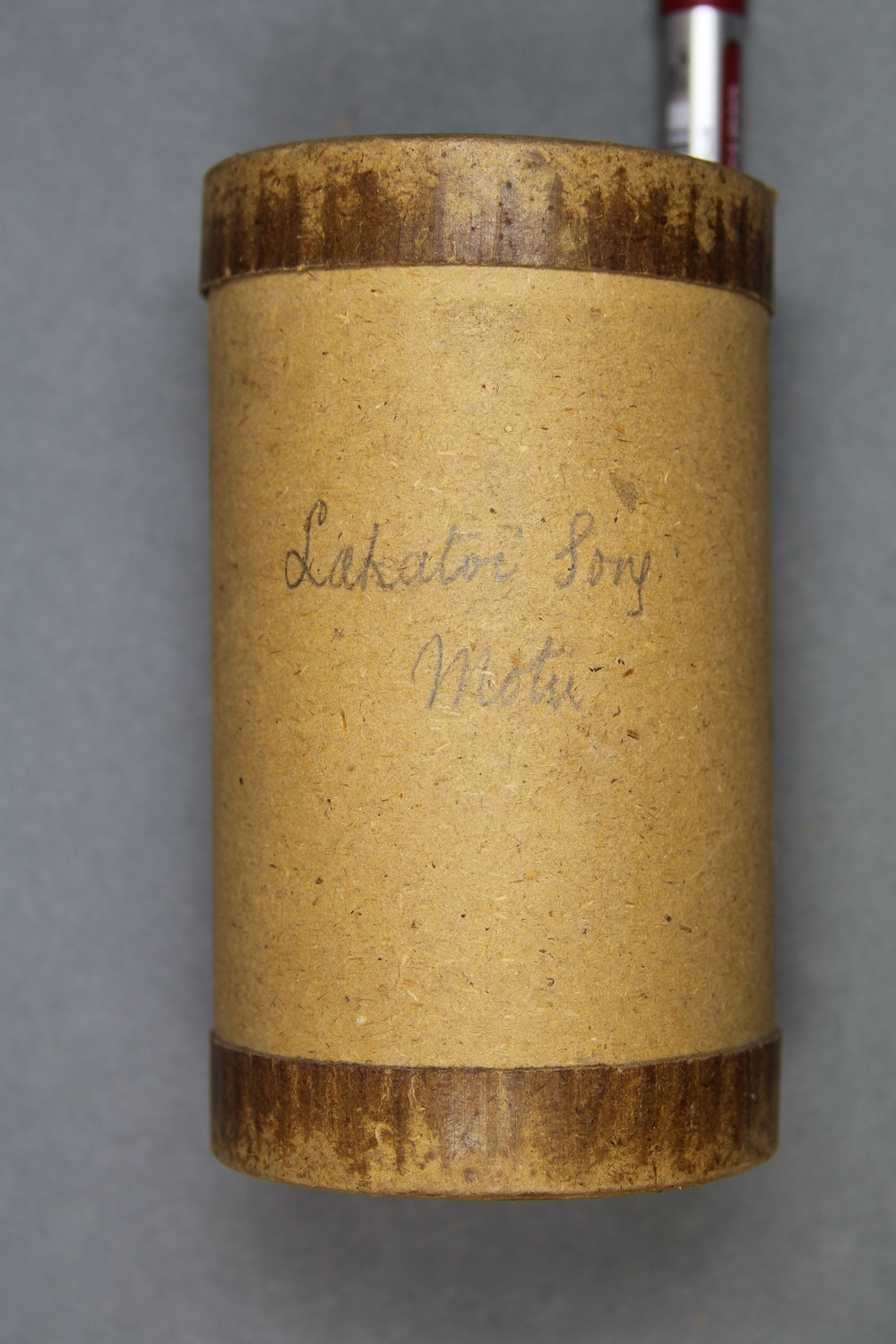     |
July 1898
On 7 July Haddon, Ray and Wilkin left Port Moresby to visit the Mekeo and Roro districts on their way back to Mer / Murray Island, one of the Torres Strait Islands, stopping first at Yule Island in Hall Sound. They spent the next 11 days in the area. One cylinder, C80/1473, notes both Roro and Mekeo. Three cylinders note the Mekeo language, C80/1471, C80/1475 and C80/1477. Seven cylinders note Roro: C80/828, C80/1470, C80/1472, C80/1474, C80/1476, C80/1478 and C80/1480. Notes on cylinder C80/1476 record that it contains a number of aroba songs; research by Don Niles indicates that aroba is a Roro genre sung without drum accompaniment.43 September 2020 Don Niles email to Vicky Barnecutt
On arrival in Hall Sound, they stayed at the Catholic Sacred Heart Mission (MSC) on Yule Island (Haddon 1901:252).5The Missionaries of the Sacred Heart (Mission de Sacré Coeur) established a mission at Yule Island in July 1885. The entire population of the island was baptised in 1891, and the mission maintained links with Torres Strait as well as New Guinea (http://115.146.86.224/mission/missionaries-sacred-heart-msc). Ray had brought the phonograph ashore and played a selection of cylinders on it in the evening; the priest and Brothers had not heard one. None of the pre-recorded demonstration cylinders are available; it is not clear what happened to them. Ray noted: “We persuaded some natives to sing into the phonograph, and, as usual, they were delighted at hearing their own voices echoed from the mysterious instrument” (1901:252).
On Friday 8 July, Ray and Wilkin went to village of Mohu (or Mou) on the mainland to visit an Irish missionary there; they also visited the villages of Pinapaka (or Pinupaka) and Babaki. Ray noted that on 9 July in Mohu, “Matzu / Mazu the Govt. Chief of the village volunteered to speak into the phono” and that then other villagers recorded “some arobas or dancing walking songs” (Ray 1898–1899:76). Haddon noted that in the evening, Ray “recorded a speech by Matsu, the chief, in which he exhorted the people to make the Government road, and finished off with a hunting song. This speech sounded very fine; it begins with the customary loud clearing of the throat, and the sentences come in bursts, the intervals of silence being evidently part of the orator’s art” (Haddon 1901:268). It is likely that this is cylinder C80/1478; the title on the cylinder box notes “Speeches and song by Matzu Chief of Mou. Roro Language”.
They returned to the MSC mission on Yule Island on 11 July (Haddon 1901:253; Haddon 1898–1899:167). On 12 or 13 July, Haddon, Ray and Wilkin visited Ziria or Tsiria, on Yule Island “when we took some measurements of the natives and bought a few ‘curios’, mostly lime gourds. We exhibited the phonograph to the Sisters living in Ziria, and gave one rehearsal in the schoolroom, and another in the marea or club-house of the village, to excited audiences” (1901:256). Ray noted “Some songs by a crippled native were recorded” (Ray 1898–1899:78). It is likely that cylinder C80/1470 “Roro songs, Ziria” was recorded on this visit.
On 14 July they heard that the ship due to take them to Torres Strait was delayed, so decided to walk inland to Veifaa (Veifa’a). They got a boat over to Pinupaka, then had a long walk across beaches, through mangrove swamps and finally plantations, to reach the mission house at Mohu: “In the evening Ray gave a phonograph entertainment” (Haddon 1901:268). They stayed at the village of Inawi for two nights and saw the preparations for a big feast.
On 15 July in Inawi they “had two interesting phonograph exhibitions in the afternoon and evening, and one chief made a speech into it amid great excitement” (Haddon 1901:272). Ray noted that this chief’s name was Arua (Ray 1898–1899:79). They left on 16 July to walk to Veifaa (Veifa, Veifa’a). On 17 July after mass, “Ray afterwards exhibited the phonograph to a very large audience of demonstrative, excitable natives and delighted missionaries … The phonograph selection was decidedly mixed, but that did not matter in the least” (Haddon 1901:273). Ray noted that “chief sang war song into phono” (Ray 1898–1899:79). Notes on the box of cylinder C80/1471 indicate that the recording is a “Mekeo War Song & Dance. Sung by Iniauna Kakouma, Eke of Veifaa”. Blayney, the Resident Magistrate, noted that the Village Constable for Veifa 1897–1898 was also the Chief, and recorded his name as Ingiauma (Blayney 1898:93).
On 18 July they left Veifaa to return to Yule Island, and set sail for Murray Island the following day.
The map below shows the order in which the expedition visited various locations in the Mekeo and Roro districts in July 1898, departing from Port Moresby. Locations are approximate and may have changed over time.
| British Library shelfmark | Recording title | Performer name | Recording location | Recording date | Content description | Performer description | Recording notes | Languages | Genre | Recordist | Recording length | Recording trip | Description of cylinder | Collection title | Cylinder location | Images of cylinder containers / documentation | Related print publication: | Related print publication: | Related print publication: | Related print publication: | Related print publication: | Related print publication: |
|---|---|---|---|---|---|---|---|---|---|---|---|---|---|---|---|---|---|---|---|---|---|---|
| C80/828 | Roro Dance | Unidentified (singer, male); unidentified (percussion) | Roro language area, Central District, British New Guinea | 7 July 1898 – 18 July 1898 | 1. Announcement: "[indecipherable] song. 2. Male vocal solo with drum accompaniment. | Poor quality recording with weak signal and surface noise. | Waima / Roro | Field recordings | Ray, Sidney | 2'43" | Alfred Cort Haddon 1898 Expedition, British New Guinea | Brown wax cylinder | Alfred Cort Haddon 1898 Expedition (Torres Strait and British New Guinea) Cylinder Collection | British Library | 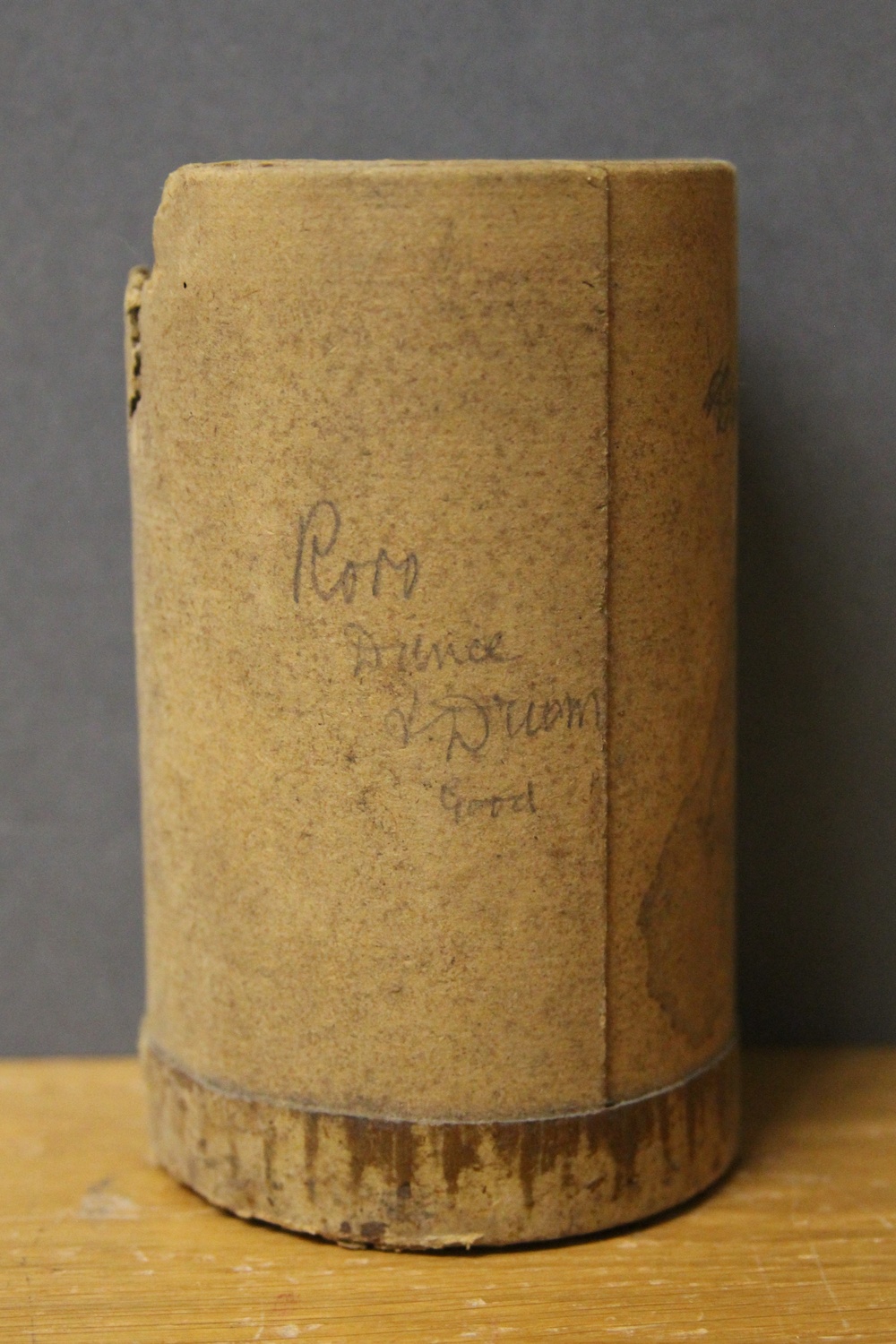      | |||||||
| C80/1470 | Roro Song | Unidentified (singer, male) | Tsiria Island, Central District, British New Guinea | 12 July 1898 – 13 July 1898 | 1. Announcement: "Roro[?] song." 2. Unaccompanied male vocal solo. | Poor quality recording with weak signal and surface noise. | Waima / Roro | Field recordings | Ray, Sidney | 2'10" | Alfred Cort Haddon 1898 Expedition, British New Guinea | Light brown wax cylinder | Alfred Cort Haddon 1898 Expedition (Torres Strait and British New Guinea) Cylinder Collection | British Library |       | |||||||
| C80/1471 | Mekeo War Song | Iniauna Kakouma (singer, male?, Eke of Veifaa) | Mekeo, Central District, British New Guinea | 7 July 1898 – 18 July 1898 | 1. 'Mekeo war song.' 2. Female [?] vocal solo, accompanied by percussion. 3. "Song [indecipherable]." 4. Unaccompanied female [?] vocal solo. | Reasonable quality recording. | Mekeo | Field recordings; War song and dance | Ray, Sidney | 2'46" | Alfred Cort Haddon 1898 Expedition, British New Guinea | Light brown wax cylinder | Alfred Cort Haddon 1898 Expedition (Torres Strait and British New Guinea) Cylinder Collection | British Library |   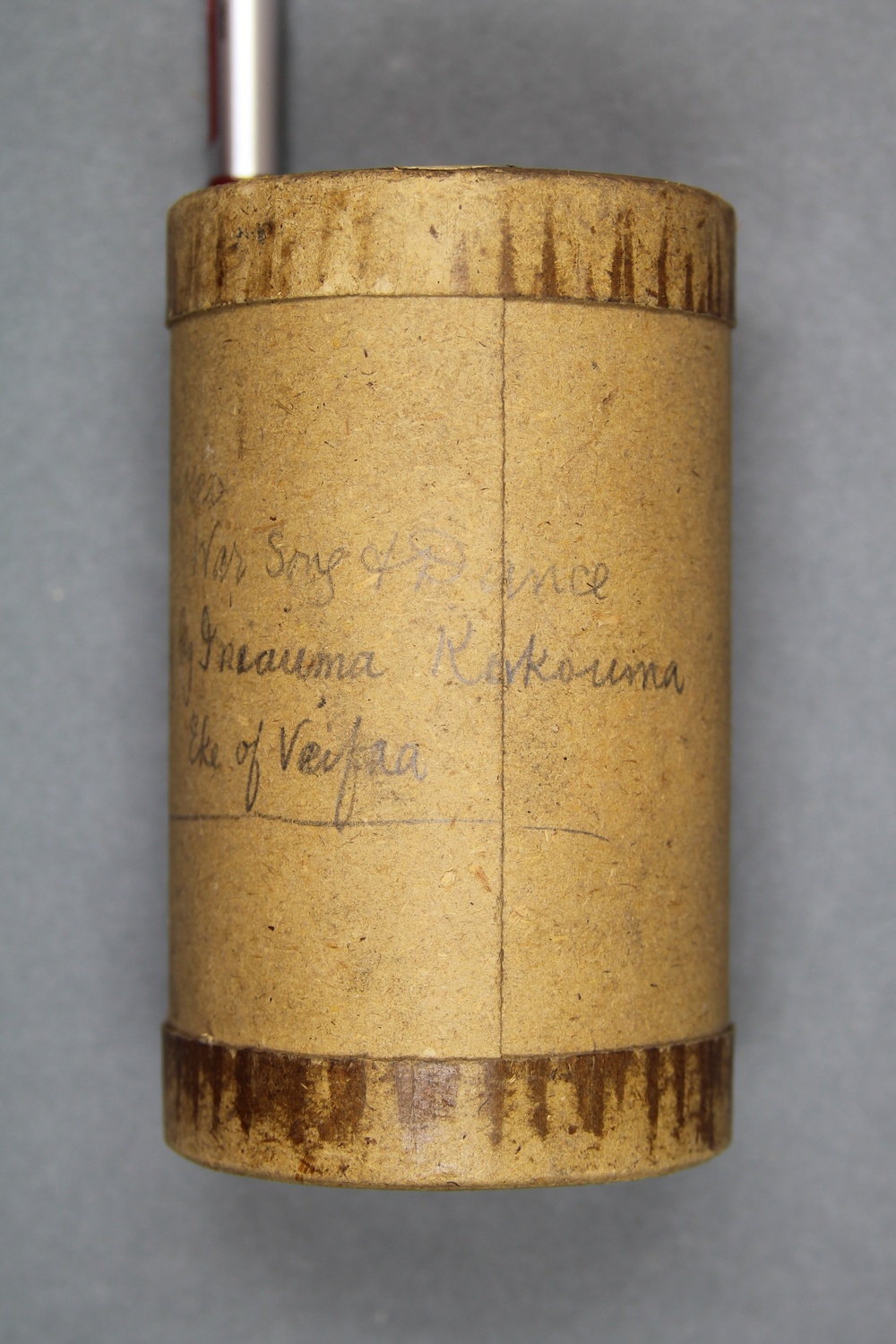    | |||||||
| C80/1472 | Roro Hymn [1] | Unidentified (singer, male); Unidentified (male chorus) | Roro language area, Central District, British New Guinea | 7 July 1898 – 18 July 1898 | 1. Announcement: "A Roro Humn." 2. Male vocal solo, occasionally acc. vocal group." | Reasonable quality recording but with surface noise due to mould on cylinder. | Waima / Roro | Field recordings; Hymns | Ray, Sidney | 2'44" | Alfred Cort Haddon 1898 Expedition, British New Guinea | Light brown wax cylinder | Alfred Cort Haddon 1898 Expedition (Torres Strait and British New Guinea) Cylinder Collection | British Library |       | |||||||
| C80/1473 | Roro Walking Song | Unidentified (singer, male) | Mekeo or Roro, Central District, British New Guinea | 7 July 1898 – 18 July 1898 | 1. Announcement: "A Roro walking song." 2. Unaccompanied male vocal solo. 3. "Mekeo dance song." 4. Unaccompanied male vocal solo. 5 "A mountain song." 6. Unaccompanied male vocal solo. | Reasonable quality recording but with surface noise due to patches of mould on cylinder. | Mekeo and Waima / Roro | Field recordings | Ray, Sidney | 2'58" | Alfred Cort Haddon 1898 Expedition, British New Guinea | Light brown wax cylinder | Alfred Cort Haddon 1898 Expedition (Torres Strait and British New Guinea) Cylinder Collection | British Library | 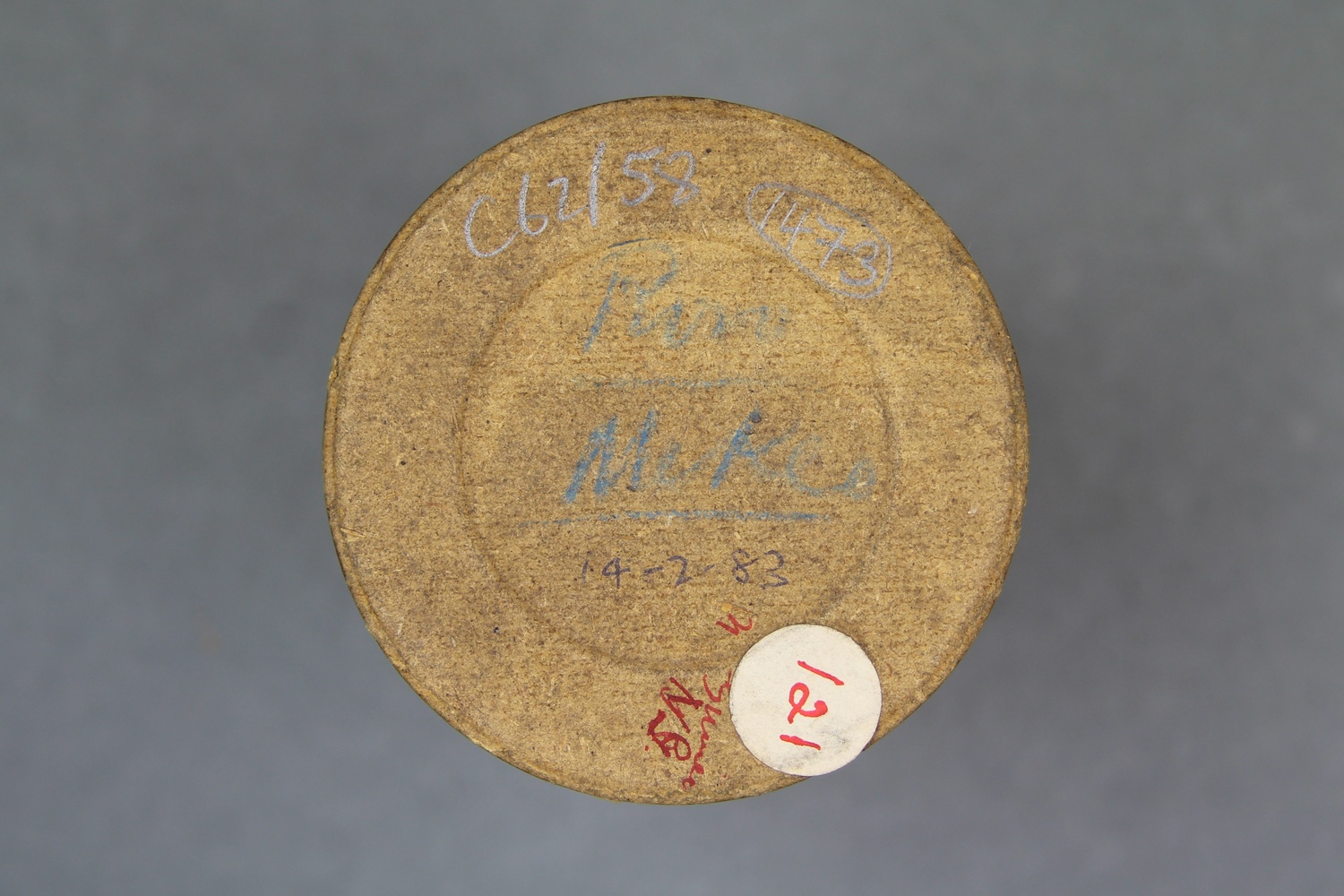 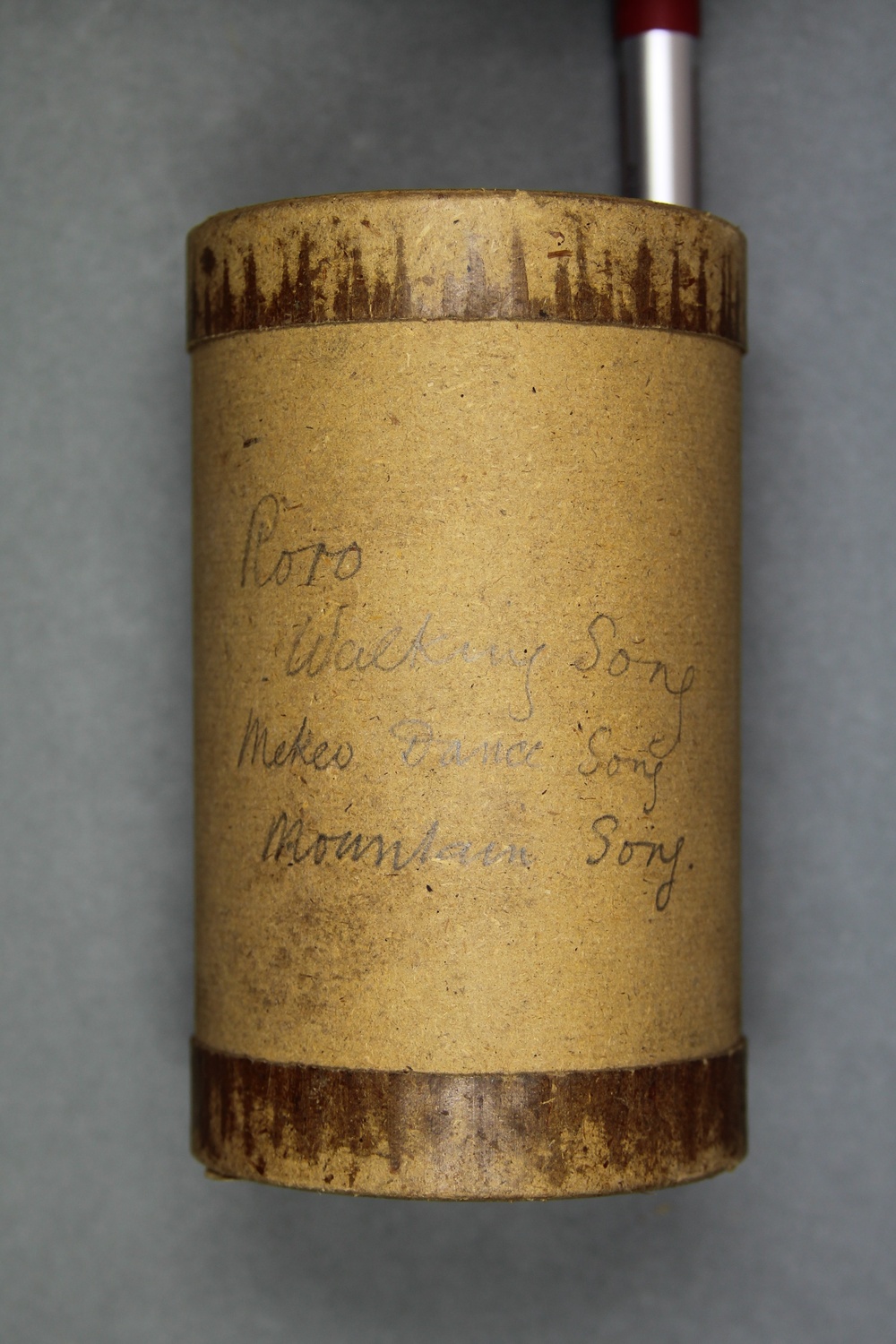     | |||||||
| C80/1474 | Roro Hymn Dominika | Unidentified (singer, male) | Roro language area, Central District, British New Guinea | 7 July 1898 – 18 July 1898 | 1. Announcement: "A Roro Hymn." 2. Unaccompanied male vocal solo. | Reasonable quality recording but with surface noise due to mould on cylinder. | Waima / Roro | Field recordings; Hymns | Ray, Sidney | 2'34" | Alfred Cort Haddon 1898 Expedition, British New Guinea | Light brown wax cylinder | Alfred Cort Haddon 1898 Expedition (Torres Strait and British New Guinea) Cylinder Collection | British Library | 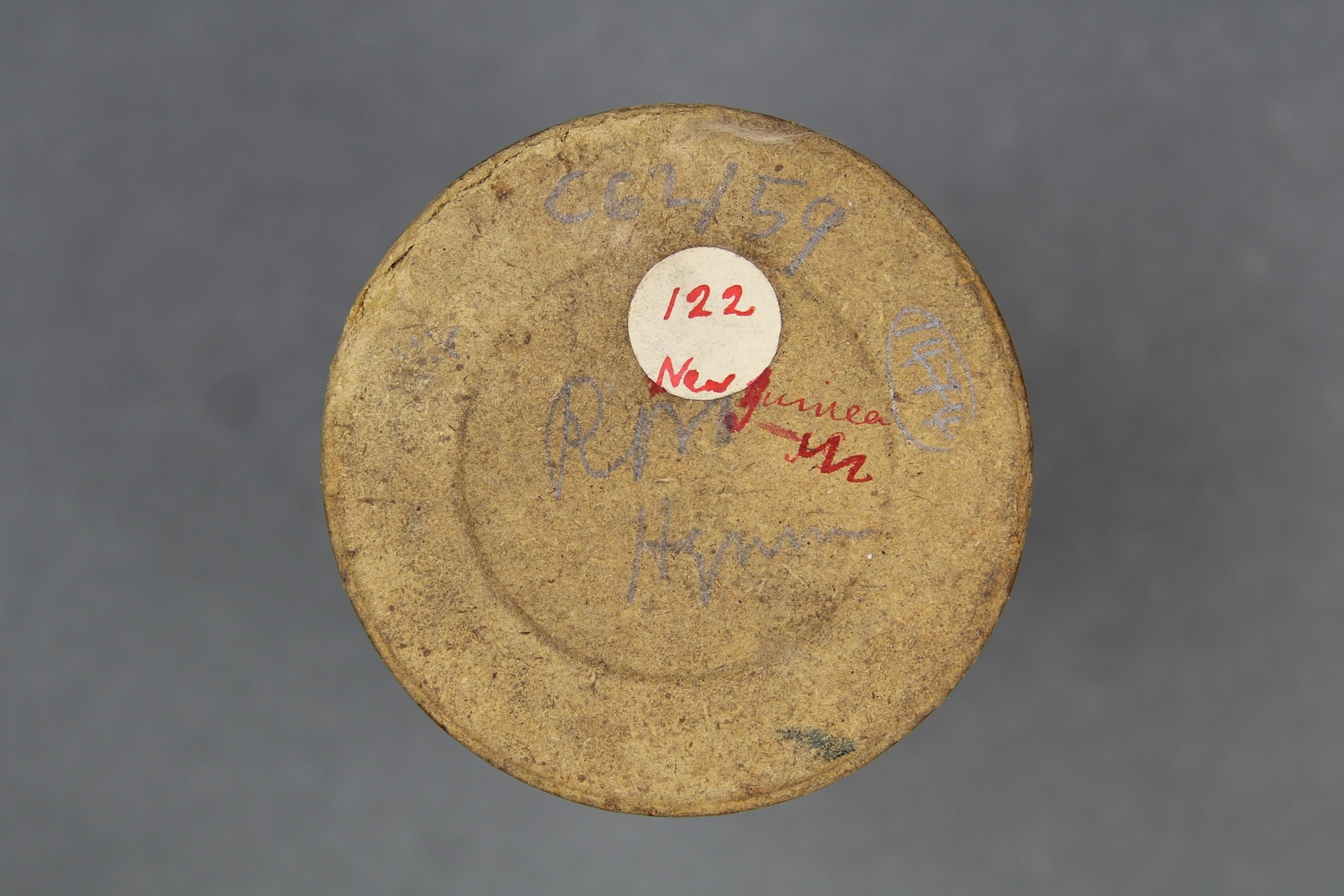      | |||||||
| C80/1475 | Mekeo Dance and Song | Unidentified (singer, male) | Mekeo, Central District, British New Guinea | 7 July 1898 – 18 July 1898 | 1. Announcement: "Mekeo Dance Song." 2. Unaccompanied male vocal group. 3. "Another Mekeo song." 4. Unaccompanied male vocal solo. 5. "Another Mekeo Song." 6. Unaccompanied male vocal solo. | Reasonable quality recording but with weak signal and surface noise. | Mekeo | Field recordings | Ray, Sidney | 2'52" | Alfred Cort Haddon 1898 Expedition, British New Guinea | Light brown wax cylinder | Alfred Cort Haddon 1898 Expedition (Torres Strait and British New Guinea) Cylinder Collection | British Library |       | |||||||
| C80/1476 | Roro Aroba Marching Songs | Unidentified (singer, male); Unidentified (male chorus) | Roro language area, Central District, British New Guinea | 7 July 1898 – 18 July 1898 | 1. Announcement: "An Aroba or Roro song" 2. Unaccompanied male vocal solo. 3. "Another Aroba." 4. Unaccompanied male vocal solo. 5. Another Aroba." 6. Unaccompanied male vocal solo. 7. "Roro [indecipherable] march." 8. Unaccompanied male vocal group. | Reasonable quality recording but with some surface noise. | Waima / Roro | Field recordings | Ray, Sidney | 3'01" | Alfred Cort Haddon 1898 Expedition, British New Guinea | Light brown wax cylinder | Alfred Cort Haddon 1898 Expedition (Torres Strait and British New Guinea) Cylinder Collection | British Library |  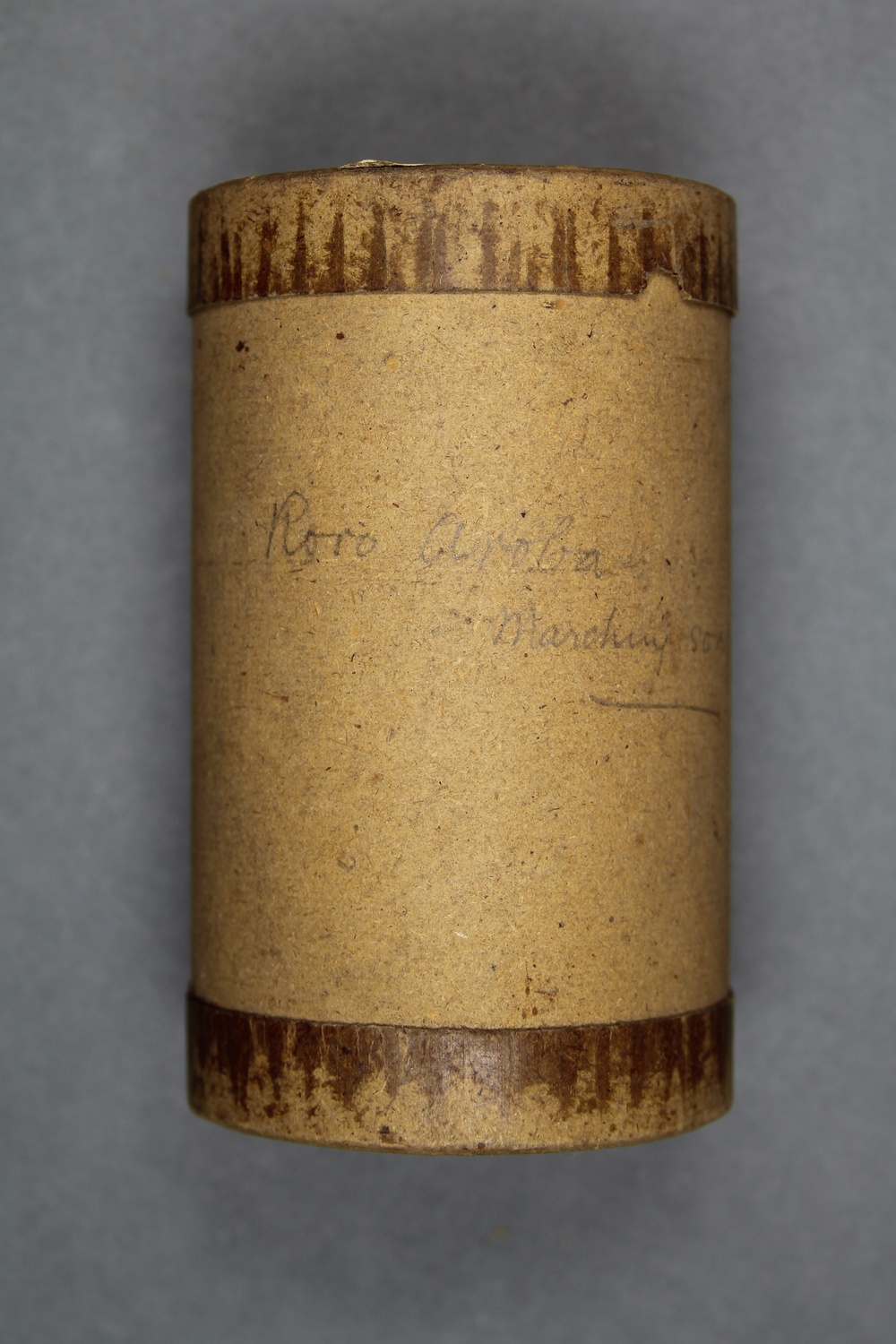     | |||||||
| C80/1477 | Mekeo Dance and Songs | Unidentified (male chorus) | Mekeo, Central District, British New Guinea | 7 July 1898 – 18 July 1898 | 1. Announcement: "Dance Song." 2. Unaccompanied male vocal group. 3. "[indecipherable] song". 4. Unaccompanied male vocal group. 5. "[indecipherable] song. 6. Unaccompanied male vocal group. | Poor quality recording with poor tracking throughout due to broken cylinder. | Mekeo | Field recordings | Ray, Sidney | 2'23" | Alfred Cort Haddon 1898 Expedition, British New Guinea | Light brown wax cylinder | Alfred Cort Haddon 1898 Expedition (Torres Strait and British New Guinea) Cylinder Collection | British Library |  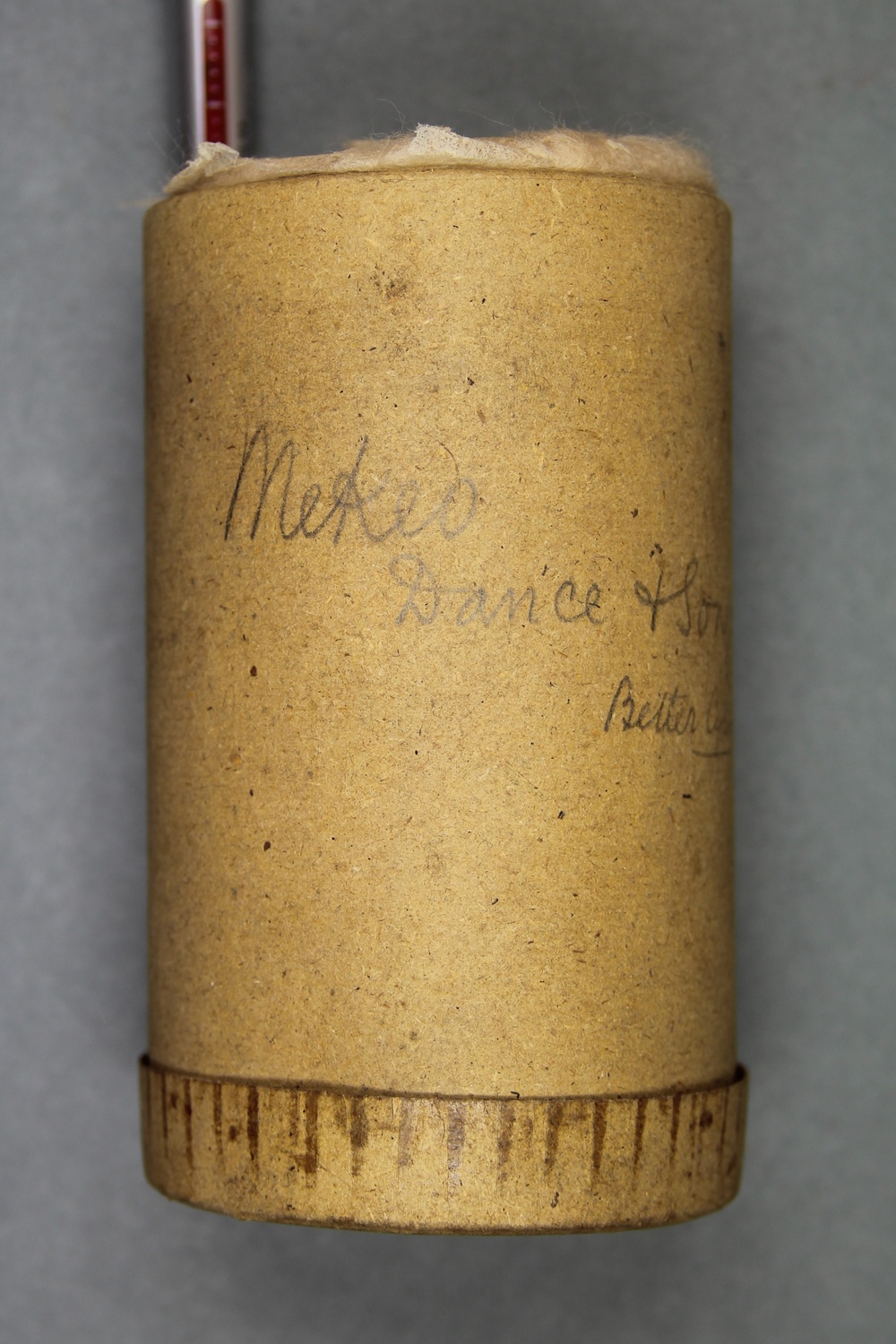 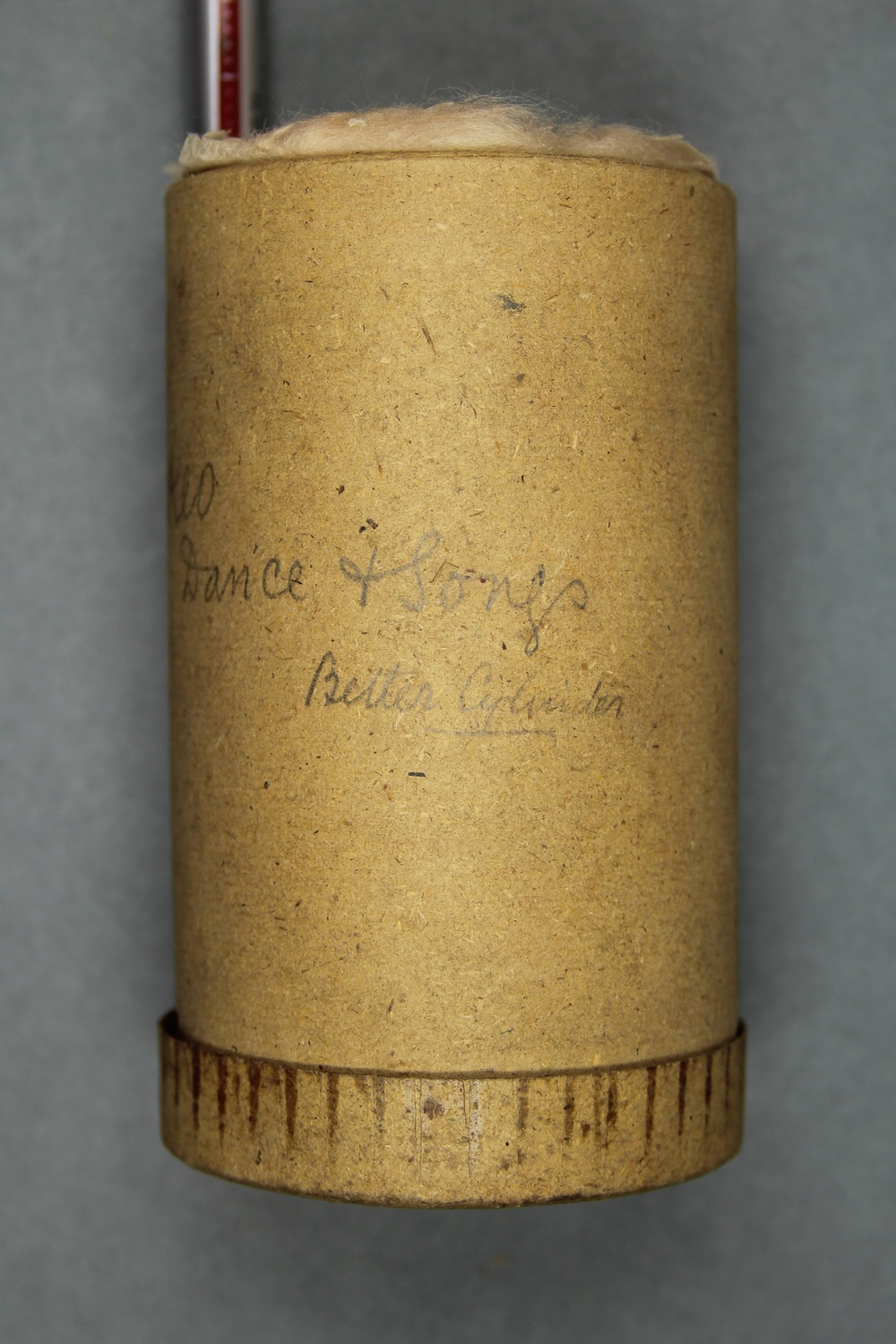    | |||||||
| C80/1478 | Roro Language | Matzu (speaker, male, chief of Mo'u) | Mohu, Central District, British New Guinea | 9 July 1898 | 1. Announcement: "Speech ...[indecipherable]... of Mon." 2. Solo male speech. 3. Indec. announcement. 4. Solo male speech. 5. "The song of the [indecipherable]. 6. Unaccompanied male vocal solo. Haddon commented that Ray had “recorded a speech by Matsu, the chief, in which he exhorted the people to make the Government road, and finished off with a hunting song. This speech sounded very fine; it begins with the customary loud clearing of the throat, and the sentences come in bursts, the intervals of silence being evidently part of the orator’s art” (Haddon 1901:268). | Reasonable quality recording. | Waima / Roro | Field recordings; Speeches | Ray, Sidney | 2'38" | Alfred Cort Haddon 1898 Expedition, British New Guinea | Light brown wax cylinder | Alfred Cort Haddon 1898 Expedition (Torres Strait and British New Guinea) Cylinder Collection | British Library | 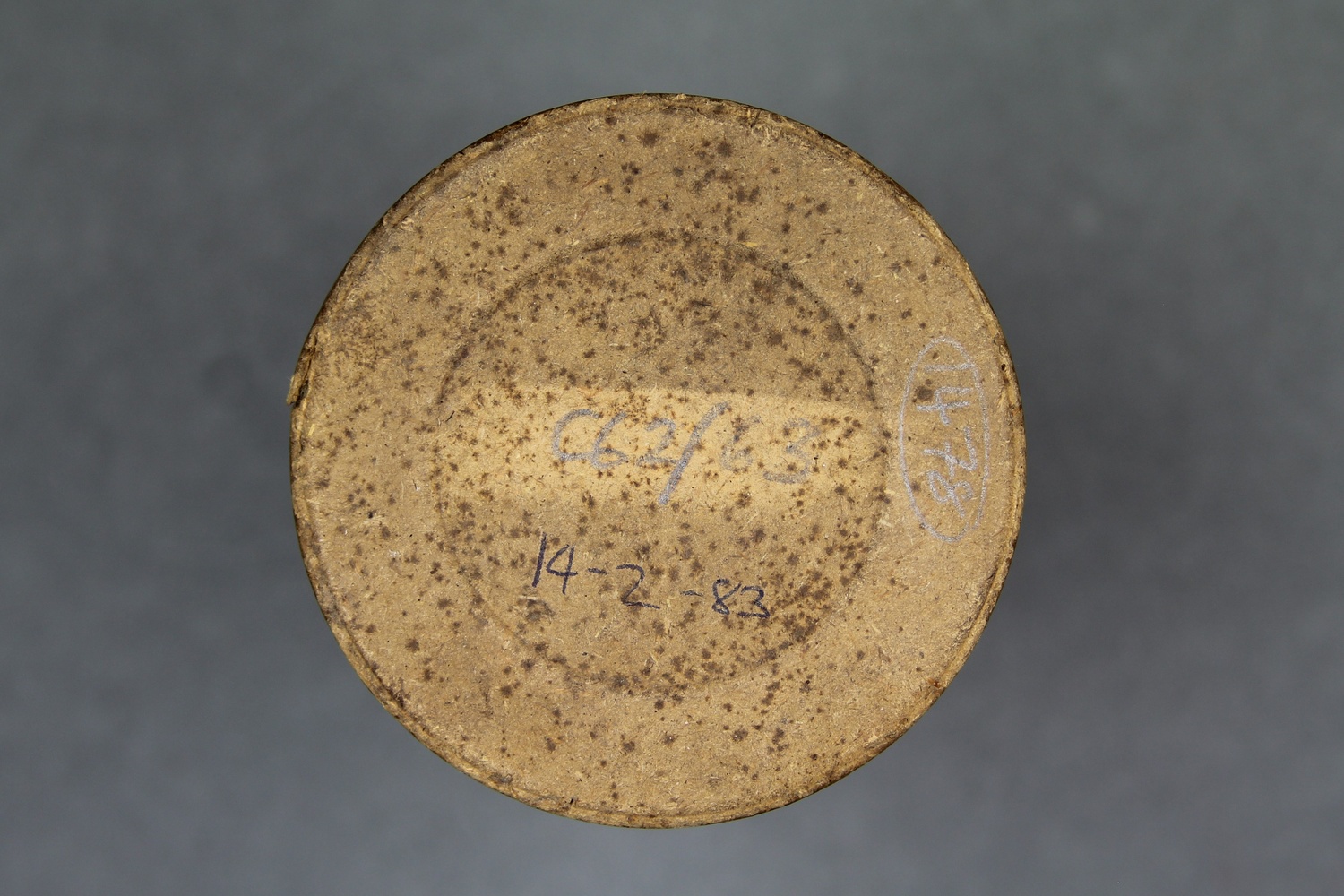      | Haddon, Alfred Cort. 1901. Head-Hunters. Black, White and Brown. London: Metheun & Co. | ||||||
| C80/1480 | Roro Hymn [2] | Unidentified (singer, male); unidentified (piano) | Roro language area, Central District, British New Guinea | 7 July 1898 – 18 July 1898 | 1. Solo male vocal, accompanied by piano. | Poor quality recording with weak signal and surface noise - improves towards end. | Waima / Roro | Field recordings; Hymns | Ray, Sidney | 1'55" | Alfred Cort Haddon 1898 Expedition, British New Guinea | Light brown wax cylinder | Alfred Cort Haddon 1898 Expedition (Torres Strait and British New Guinea) Cylinder Collection | British Library | 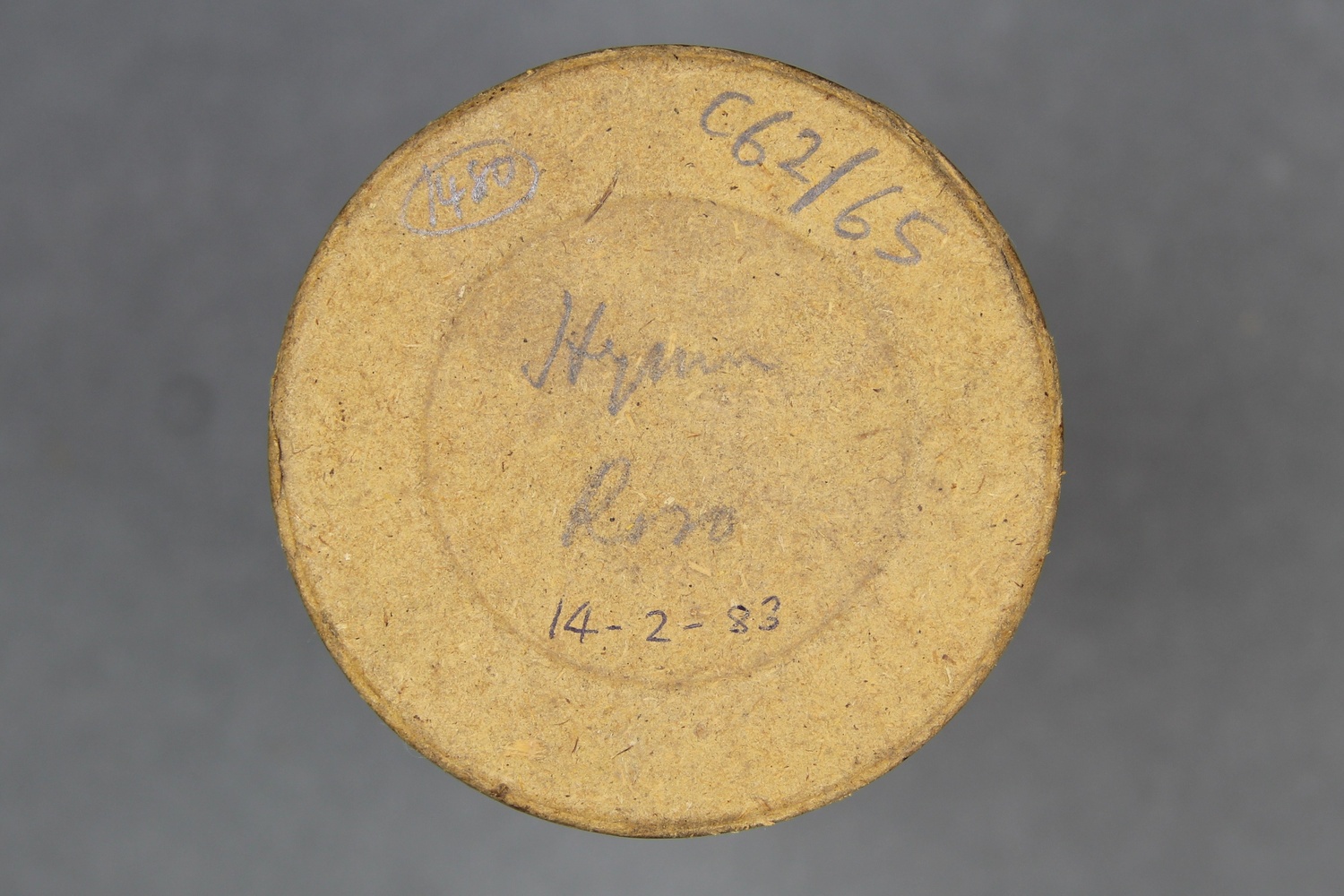      |
Seligmann’s solo trip, June – September 1898
On 25 June Seligmann left Haddon, Ray, and Wilkin “to visit Mr English at Rigo” (Haddon 1901:248). He spent two and a half months travelling by himself before joining Haddon, Rivers, and Ray at Saguane on Kiwai Island on 12 Sept (ibid:109). It is difficult to ascertain exactly where Seligmann went during this time.
Haddon noted that Seligmann “had made several interesting trips in the Rigo and Mekeo districts, and had acquired a good deal of valuable information” (1901:109). He also thanked Seligmann for “information about the Sinaugolo and Garia tribes … obtained … from Mr. English” (Haddon 1900:286). Seligmann described the Sinaugolo as a “powerful and numerous … inland tribe inhabiting the Rigo District of British New Guinea”, and noted that he had collected information about their medicine, surgery and midwifery in 1898 (1902:297).
At some point on the journey between Rigo and Kiwai, Seligmann visited “villages 18 to 20 miles up the river” in the Mekeo District (Haddon 1900:440). He measured eight men of “the Uni Uni folk of the village of Emene” (ibid:291); Emene was a village “on a southern spur of Boboleva (Mount Davidson)” (ibid:422). It is not clear at what point and how Seligmann visited the inland villages, but it was likely that he followed a river in from the coast rather than walked across country. See Sketch Map of Mekeo District above.
Seligmann seems to have travelled to Kiwai via Mekeo and other areas on the south coast with the help of missionaries and colonial officials. He described “a short stay at Waima” in 1898 (1910:240); Waima is a village on the mainland to the north of Yule Island. Haddon noted that he, Ray, and Wilkin intended to visit Waima in July 1898 when they were in the area, but that they had to give up this “much-desired” visit, as the ship to take them back to the Torres Strait had arrived and was waiting for them (1901:276). Haddon also mentioned information gleaned from Father Guis at Waima (ibid:259), suggesting that Waima had an MSC station.
On 25 August, Seligmann called in at Moru, on the coast between Waima and Jokea (Iokea, Yokea), and stayed there with the LMS missionary John Henry Holmes (Reid 1978:176; journal of John Henry Holmes).6His journal is in SOAS but was copied by the Joint Copying Project so is available on Trove https://nla.gov.au/nla.obj-2740140934/view Holmes and Seligmann visited the villages of Tatikaro, on the Biaru River, Miaru, and Oikapu. Holmes noted that Seligmann “measured heads, bought a few curios”, took photographs, and conducted colour and sight tests in these villages (Holmes 1898:238-243). On 1 September, Seligmann left Moru with some “carriers” loaned to him by Holmes; these men returned the following evening, so may have walked with Seligmann up to the mission station at Jokea (Homes 1898:244). Seligmann mentioned spending “a few days” there (1910:172), presumably at the LMS mission.7https://archiveshub.jisc.ac.uk/search/archives/938794da-7729-319a-86bd-a827477c176b?component=bb50a37e-3031-3cac-b85b-c0a37dee986a; https://pacificwrecks.com/provinces/png_iokea.html. Eleven days later, he arrived at Kiwai Island. Ray noted in his journal on 14 September that Seligmann “had been to Rigo, Mekeo + Yokea” (Ray 1898–1899:87).
The map below shows the locations visited by Seligmann during his solo trip from June to September 1898. Locations are approximate and may have changed over time.
September 1898
On 8 September Haddon, Rivers, Ray and Wilkin left Murray Island for Kiwai, landing on 11 September at Saguane (or Sanguane, Saguana), “a small village at the southern extremity of Kiwai Island,” where the LMS mission was based (Haddon 1901:96). They met Haddon’s “old friend” the Rev. James Chalmers, known as Tamate, (1901:95). On 12 September, Haddon, Ray and Wilkin went to Iasa, the main village of Kiwai Island, for two nights. Rivers stayed in Saguane “psychologising the Kiwaians”, so he was there when Seligmann arrived later in the day of 12 September (1901:109). Haddon, Ray, Rivers, Seligmann and Wilkin were together on 14 September, but the following day, Haddon, Rivers, Seligmann and Wilkin departed for Mabuiag. Ray stayed on at Saguane for a fortnight as he “wanted to gain some information about the Kiwaian language” (1901:109).
Ten cylinders are labelled as being from Kiwai, C80/1035, C80/1082, C80/1083, C80/1084, C80/1085, C80/1086,C80/1087, C80/1088, C80/1089 and C80/1090, although C80/1086 is broken.
On 13 September in Iasa Ray “gave a phonographic exhibition, and secured two good records” (Haddon 1901:99). Ray wrote that “One man sang two songs with drum, of which I got good records though the smoke and firelight made preparation difficult” (Ray 1898–1899:87). It is possible that C80/1035 was recorded on 13 September as it is the only Kiwai cylinder where the use of a drum was noted on the cylinder insert – “Kiwai Sairo – male voice and drum”. There are two tracks on this cylinder. The other Kiwai cylinders were probably recorded 15–29 September, when Ray was there by himself.
On 14 September in Iasa, Haddon had “a confidential chat with the men” and “obtained some very interesting information” (Haddon 1898–1899:218) concerning the use of bullroarers in the initiation of boys into manhood in the Moguru ceremony (Haddon 1898–1899:222). In volume 1 of the Reports, there is a section on the history and totemic grouping of the Kiwai (Haddon 1935:210–236). Much of the information came from Landtman (1927).8Gunnar Landtman was a Finnish anthropologist, who, after discussion with Haddon, went to Kiwai Island in 1910–1912 to conduct research. Whilst there, he made cylinder recordings, and wrote a number of articles and monographs (also see Lawrence and Varjola 2010). The section includes a description of the Moguru ceremony, “the most sacred, secret and awe-inspiring ceremony of the Kiwai people”, relating to the fertility of the gardens and the initiation of young people (1935:213-214). The Moguru ceremonies were also mentioned in volume 5 of the Reports (Haddon 1904:218). Haddon collected a number of madubu bullroarers connected to the Moguru ceremony, and a smaller effigy called umuruburu (ibid:218).9https://collections.maa.cam.ac.uk/objects/525956.
Ray noted,
I stayed for a fortnight with the Rev. J. Chalmers at the mission station at Saguane on the South extremity of Kiwai Island. In his school were several intelligent lads who were learning English and from them I endeavoured to gain a knowledge of the structure of the language. Two of them, Ibida and Waseu, were natives of Kiwai, two others, Abare and Dodoa, were natives of Mawata. Phrases were also obtained from Dedeamo, our guide to Iasa, and from other natives at various times and places. (Ray 1907:302)
It is possible that Dodoa was the performer for C80/1082. Unfortunately the cylinder insert for this, and a number of the other Kiwai recordings, cannot be located, but it was originally transcribed as Kiwai a… sung by Dora (Doia?). The recorded announcement is difficult to discern but may well mention Dodoa.10N.22950.ACH2 is side portrait of Kamena, Dodo and Aniwa https://collections.maa.cam.ac.uk/photographs/316222
Ray noted in his journal that he recorded on the phonograph in the evening of 16 September, “Girls sang a Kiwai lament, youth sang a Mado. Only fair records” (Ray 1898–1899:87). The insert for C80/1086, the broken cylinder, indicates that it was a Kiwai Lament. It is not clear whether the Mado recording was on the same cylinder, or whether it was one of the recordings noted as Madio or Madia. Three recordings probably related to the Kiwai Madia ceremony. The insert note for C80/1085 reads Kiwai Madia, and the insert notes from C80/1084 and C80/1089 say Kiwai Madio. Haddon noted, from Landtman, that the Madia ceremonies were part of the initiation into gardening for boys and girls, and hunting for the boys. The ceremonies were said to be very old (Haddon 1935:217). There is another important dance called Mado, described as being “very much the same character” as Madia, although it did not “rank quite so high in public estimation” (ibid.:219). It is unclear whether the insert note Kiwai Madio related to Madia or Mado ceremonies.
Ray noted recording “songs by Ipisia chief, the Mangaian teacher, his wife + others. Most of them very good” on 22 September11Mangaia is one of the Cook Islands; the LMS brought teachers from the Cook Islands and other parts of Polynesia to work in British New Guinea. (Ray 1898–1899:88). He did not note the name of the Ipisia chief but noted that the teacher was called Teina Kori (Ray 1898–1899:87). On 27 September he noted “In evening Phono – got a very fair selection of various Kiwai songs, also one in Kuboia [?]” (Ray 1898–1899:88). On 28 September he wrote that “Gamena’s (chiefs) wife came this morning and sang into the phono. After women + children had gone Gamena sang the Moguru songs, which are chanted when the Orara is shown to the young men” (Ray 1898–1899:88). Gamena was the chief at Saguane (Ray 1907:318). The insert of cylinder C80/1088 noted Moguru Wasare, suggesting that this is the recording made by Gamena. Ray noted that wasare meant hymn or song in the Kiwai language (1931:151). An orara was a “wooden images of a nude woman… described as ‘god belong moguru’” (Haddon 1904:218).
Haddon included Landtman’s descriptions of “outdoor mimetic dances which are held only for the sake of general amusement, or in celebration of some public or private event”, that “are of a purely secular character and imitate actions from real life”; one of these is the Badara, “said to have been introduced from Bugi” (Haddon 1935:219). The recording of cylinder C80/1087 presumably relates to this dance, as Kiwai Badara was written on its insert note. Another such dance was the Hairo or Sairo, “an old dance … regarded as the most important of the mimetic shows”, with songs that refer to “legendary incidents related in the folk-tales” (ibid.:219). Kiwai Sairo was written on the insert notes of two cylinders, C80/1035 and C80/1083.
On their way back to Mabuiag, Haddon, Rivers, Wilkin, and Seligmann went ashore at Old Mawatta, “a temporary village of simple huts built on the ground. The people had come over from Parama to make gardens, and among them was the only Murray Island teacher in New Guinea” (Haddon 1901:109).12Murray, or Mer, Island was the site of the first LMS mission station in the region Haddon noted that it was called Old Mawatta “as it was the home of the original inhabitants of Katau, or Mawatta” (ibid.:111). They arrived in Mabuiag on 17 September. Ray and Chalmers left Kiwai on 29 September and arrived in Mabuiag on 3 October.
The collection has one recording from Mowatta / Mawata, cylinder C80/1094. Mowatta was written on the cylinder lid, and the insert note recorded “Serasera arubia meaurami, sung by Pauna.” Pauna is mentioned a number of times in the Reports; she is referred to as “Pauna, wife of Maino of Tutu, herself originally a native of Mawata, New Guinea” (Haddon 1912:16), and again as Maino from Tutu-Yam’s wife (Haddon 1904:161). Haddon explained that the “Tutu men had close association with the inhabitants of the Daudai coast of New Guinea and joined in the ceremonies at Mawata. Occasionally marriages took place, and Maino had married Pauna, a Mawata woman” (1935:77). Tutu is the small island of Tudu, to the north-east of Yam in the Torres Strait. Pauna was one of Maino’s three wives (David et al. 2015:292); it is not known where the other two women were from, nor where they lived.
We do not know where the recording on C80/1094 was made. There is no evidence to suggest that Pauna travelled to British New Guinea with the Expedition. Ray did not go ashore at Mowatta on his journey between Kiwai and Mabuiag at the end of September 1898, and Pauna was not mentioned in his journal. Pauna may have lived on Yam or Tudu on the land of her husband, Maino.
Haddon had met Maino, the Mamoose13The Mamoose or Mamus was a government-appointed representative or head man. The Mamoose system was implemented in the Torres Strait Islands in the late 1870s. (Philp 1999:59, Shnukal 2015:58). of Tudu and Yam, on Tudu in 1888 (Haddon 1901:171–172). Haddon, Ray, and Seligmann picked Maino up from Yam on 22 October and then went on to Saibai and Tudu with him, before going on to Thursday Island. Haddon wanted to “go over the old sacred sites with Maino” on Tudu (1898:254). Maino was noted as the performer for the C80 Torres Strait cylinder C80/1093. It is possible that Pauna performed for C80/1094 on Yam, Saibai or Tudu in October 1898.
The map below shows the order in which members of the expedition visited locations in Western Province in September 1898, before returning to the Torres Strait Islands. Locations are approximate and may have changed over time.
| British Library shelfmark | Recording title | Performer name | Recording location | Recording date | Content description | Performer description | Recording notes | Languages | Genre | Recordist | Recording length | Recording trip | Description of cylinder | Collection title | Cylinder location | Images of cylinder containers / documentation | Related print publication: | Related print publication: | Related print publication: | Related print publication: | Related print publication: | Related print publication: |
|---|---|---|---|---|---|---|---|---|---|---|---|---|---|---|---|---|---|---|---|---|---|---|
| C80/1035 | Kiwai Sairo [1] | Unidentified (singer, male) | Kiwai Island, Western District, British New Guinea | 13 September 1898 | Tracks 1 and 3 are Indecipherable announcement. Tracks 2 and 4 Unaccompanied male vocal solos. On insert note: 'Kiwai Sairo - male voice and drum'. A sairo was an old dance, a mimetic show related to folk-tales, according to Haddon (1935:219). | The recording is of a poor quality with heavy surface noise and weak signal. | Southern Kiwai (Island Kiwai dialect) | Field recordings; Mimetic dance | Ray, Sidney | 2'22" | Alfred Cort Haddon 1898 Expedition, British New Guinea | Brown wax cylinder | Alfred Cort Haddon 1898 Expedition (Torres Strait and British New Guinea) Cylinder Collection | British Library | 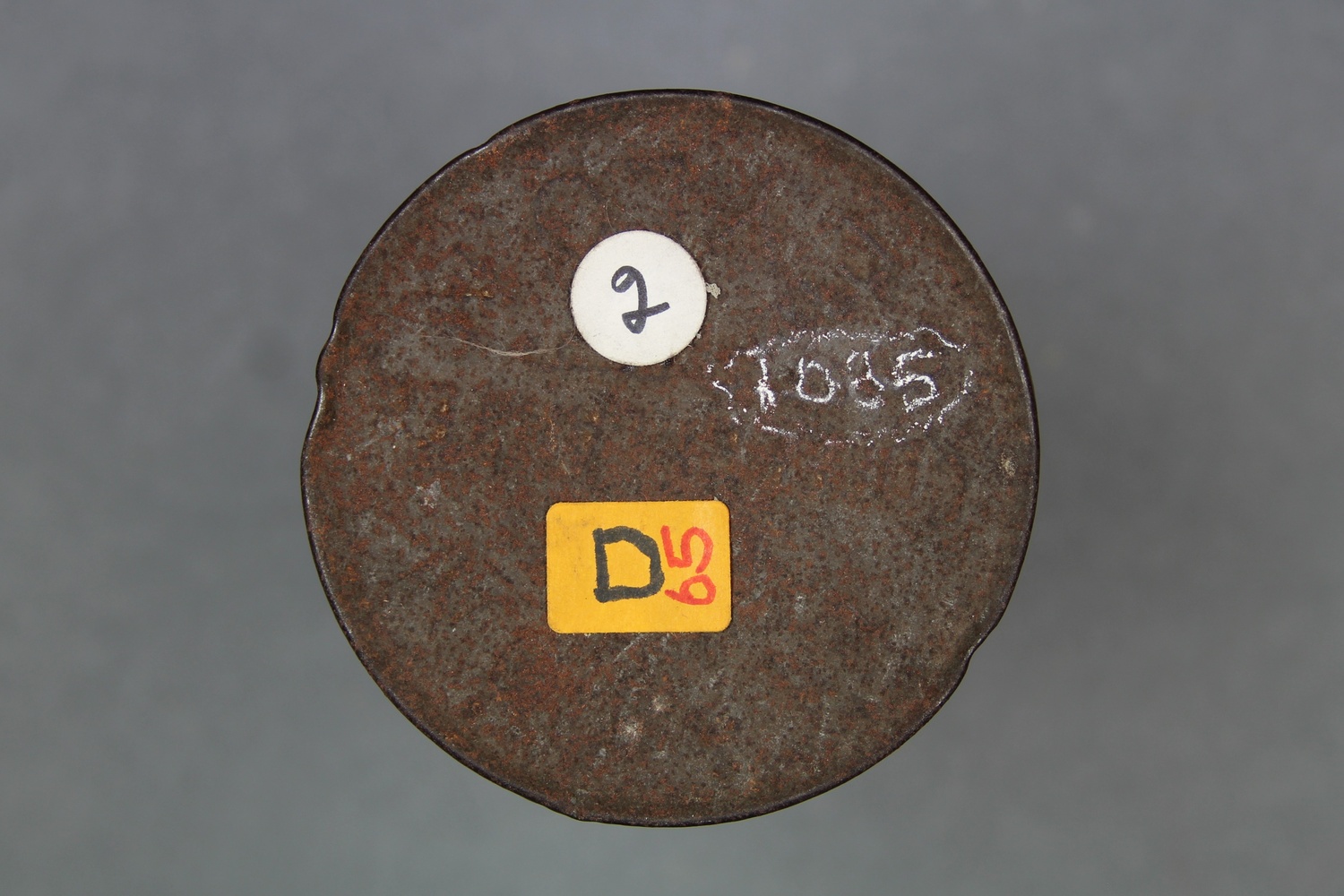      | Haddon, Alfred Cort (ed.) 1935. Reports of the Cambridge Anthropological Expedition to Torres Strait: Volume I, General Ethnography. Cambridge: Cambridge University Press. | ||||||
| C80/1082 | Male vocal solo | Dodoa? (singer, male) | Kiwai Island, Western District, British New Guinea | 15 September 1898 – 29 September 1898 | 1. Announcement: "Wayti naupui, sung by Bui [?]". 2. Unaccompanied male vocal solo. | Reasonable quality recording but with heavy surface noise due to mould on cylinder. | Southern Kiwai (Island Kiwai dialect) | Field recordings | Ray, Sidney | 2'12" | Alfred Cort Haddon 1898 Expedition, British New Guinea | Brown wax cylinder | Alfred Cort Haddon 1898 Expedition (Torres Strait and British New Guinea) Cylinder Collection | British Library | 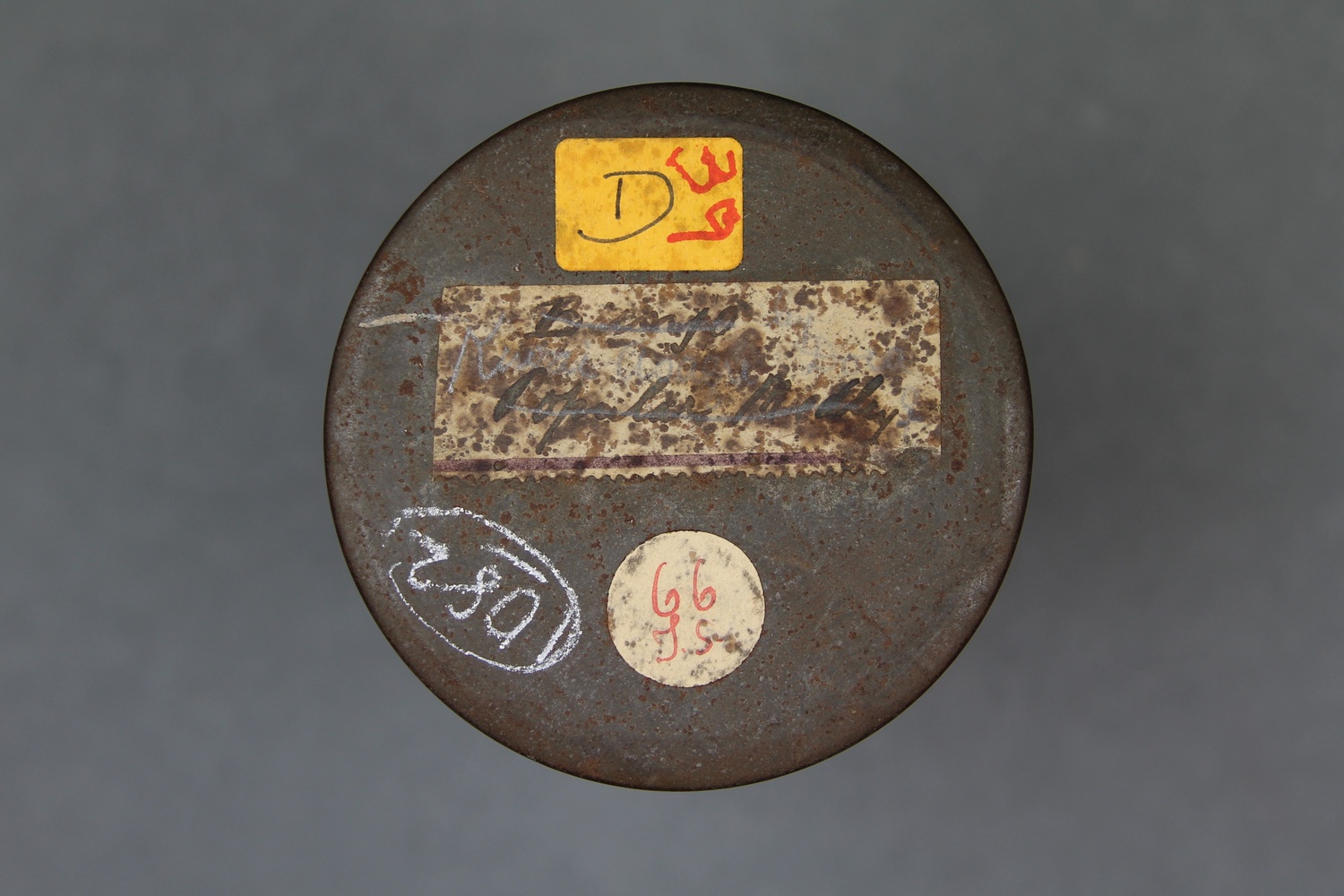      | |||||||
| C80/1083 | Kiwai Sairo [2] | Unidentified (singer, male); unidentified (percussion) | Kiwai Island, Western District, British New Guinea | 15 September 1898 – 29 September 1898 | 1. Indecipherable announcement. 2. Male vocal solo, accompanied by percussion. 3. Indecipherable announcement. 4. Male vocal solo, accompanied by percussion. According to Don Niles, 'Sairo' indicates a dialect of Island Kiwai, or Southern Kiwai). A sairo was an old dance, a mimetic show related to folk-tales, according to Haddon. | Reasonable quality recording but with fluctuating speeds and heavy surface noise. | Southern Kiwai (Island Kiwai dialect) | Field recordings; Mimetic dance | Ray, Sidney | 2'23" | Alfred Cort Haddon 1898 Expedition, British New Guinea | Brown wax cylinder | Alfred Cort Haddon 1898 Expedition (Torres Strait and British New Guinea) Cylinder Collection | British Library | 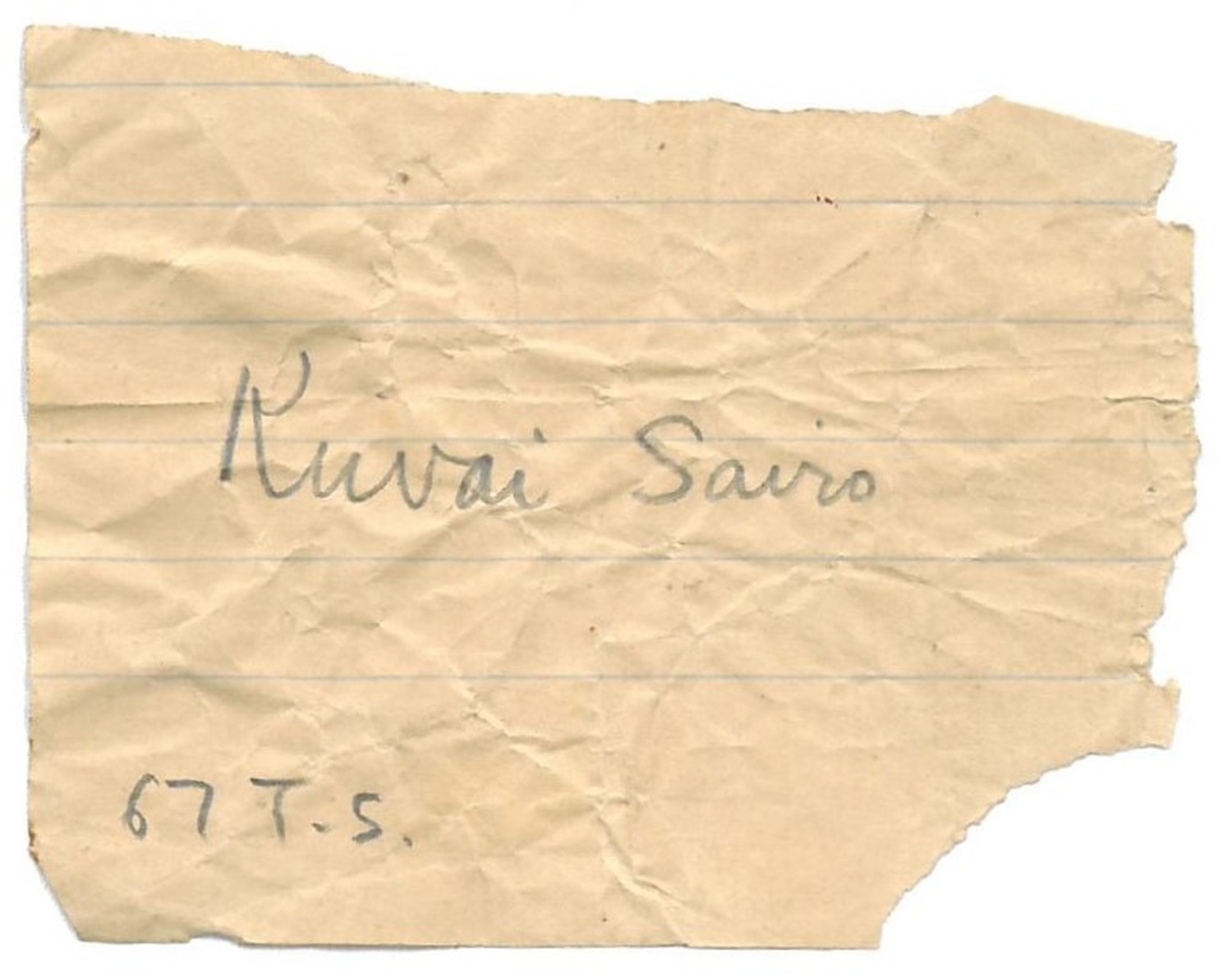 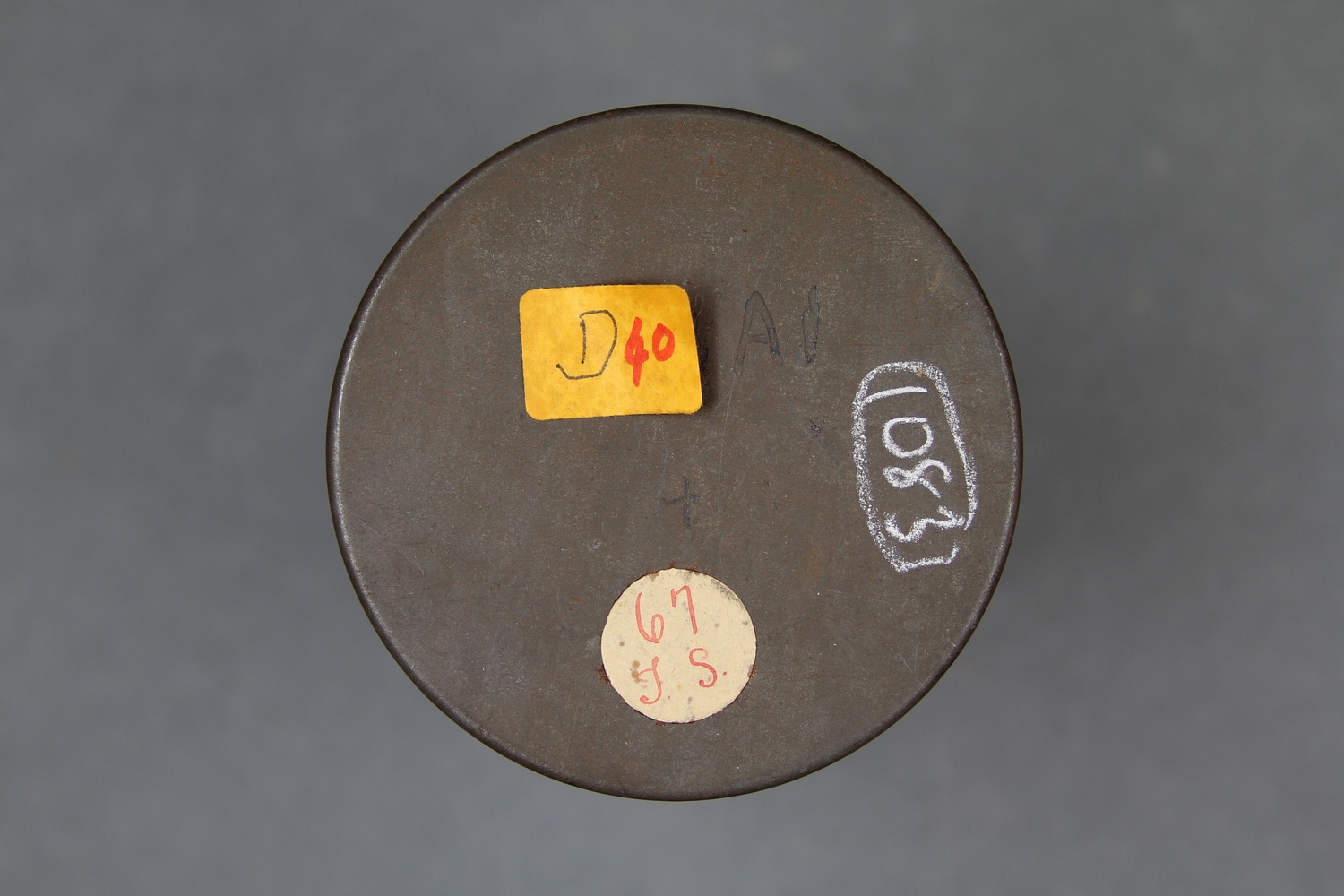     | Haddon, Alfred Cort (ed.) 1935. Reports of the Cambridge Anthropological Expedition to Torres Strait: Volume I, General Ethnography. Cambridge: Cambridge University Press. | ||||||
| C80/1084 | Kiwai Madio [1] | Unidentified (singer, male); unidentified (percussion) | Kiwai Island, Western District, British New Guinea | 15 September 1898 – 29 September 1898 | 1. Indecipherable announcement. 2. Male vocal solo, accompanied by percussion. A song relating to the madia initiation ceremonies, said to be very old (Haddon 1935:217). | Reasonable quality recording but with surface noise due to mould on cylinder. | Southern Kiwai (Island Kiwai dialect) | Field recordings; Initiation song | Ray, Sidney | 2'12" | Alfred Cort Haddon 1898 Expedition, British New Guinea | Brown wax cylinder | Alfred Cort Haddon 1898 Expedition (Torres Strait and British New Guinea) Cylinder Collection | British Library |  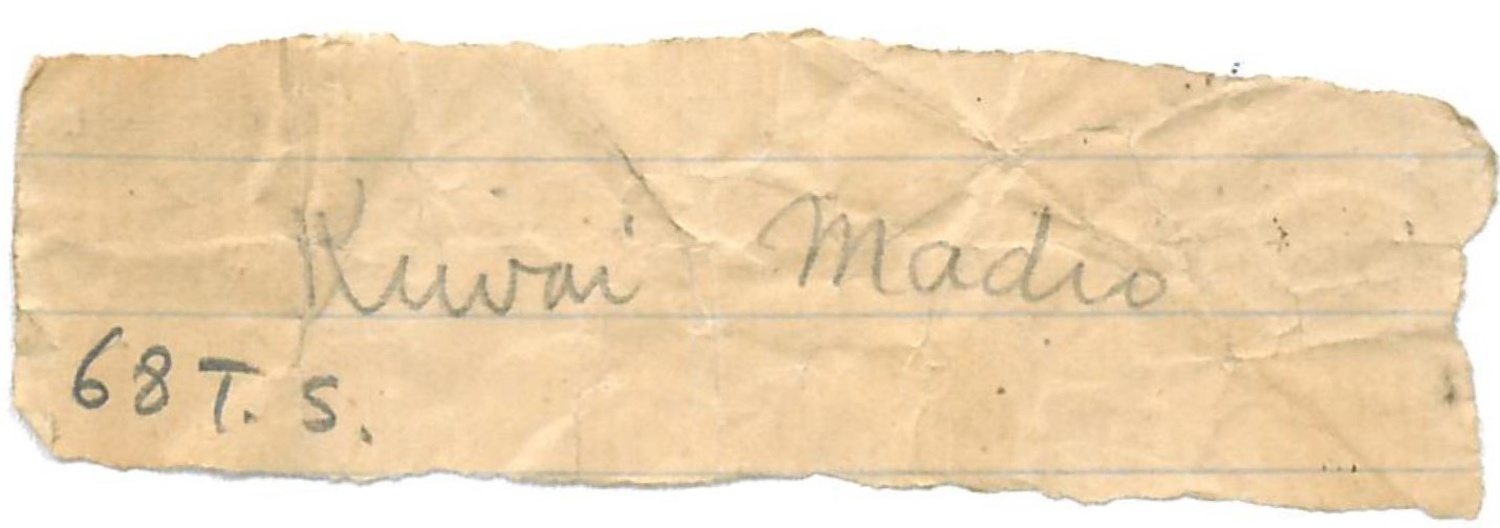 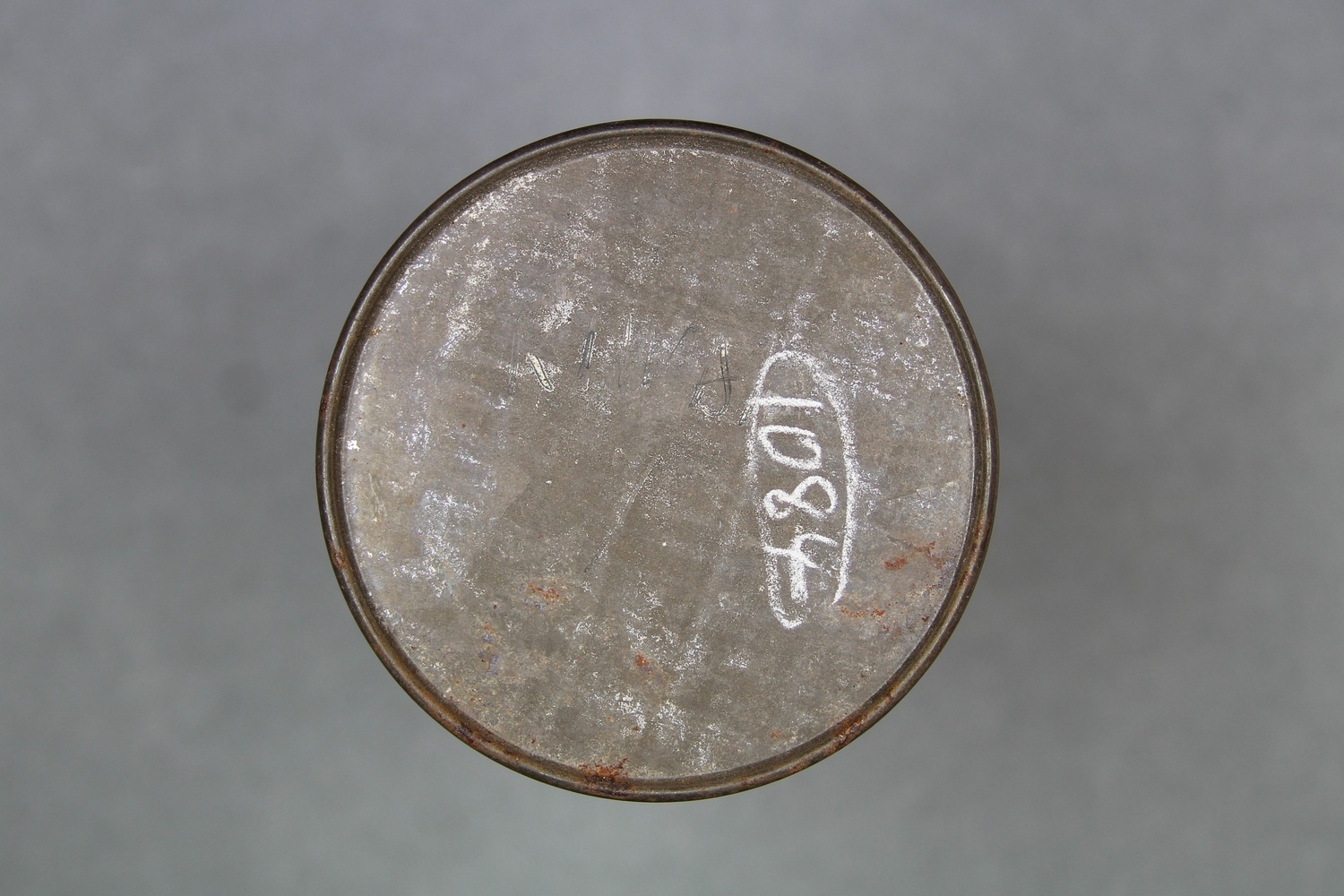    | Haddon, Alfred Cort (ed.) 1935. Reports of the Cambridge Anthropological Expedition to Torres Strait: Volume I, General Ethnography. Cambridge: Cambridge University Press. | ||||||
| C80/1085 | Kiwai Madia | Unidentified (singer, male); unidentified (percussion) | Kiwai Island, Western District, British New Guinea | 15 September 1898 – 29 September 1898 | 1. Indecipherable announcement. 2. Vocal group accompanied by percussion. A song relating to the madia initiation ceremonies, said to be very old (Haddon 1935:217). | Reasonable quality recording but with heavy surface noise due to mould on cylinder. | Southern Kiwai (Island Kiwai dialect) | Field recordings; Initiation song | Ray, Sidney | 1'46" | Alfred Cort Haddon 1898 Expedition, British New Guinea | Brown wax cylinder | Alfred Cort Haddon 1898 Expedition (Torres Strait and British New Guinea) Cylinder Collection | British Library |  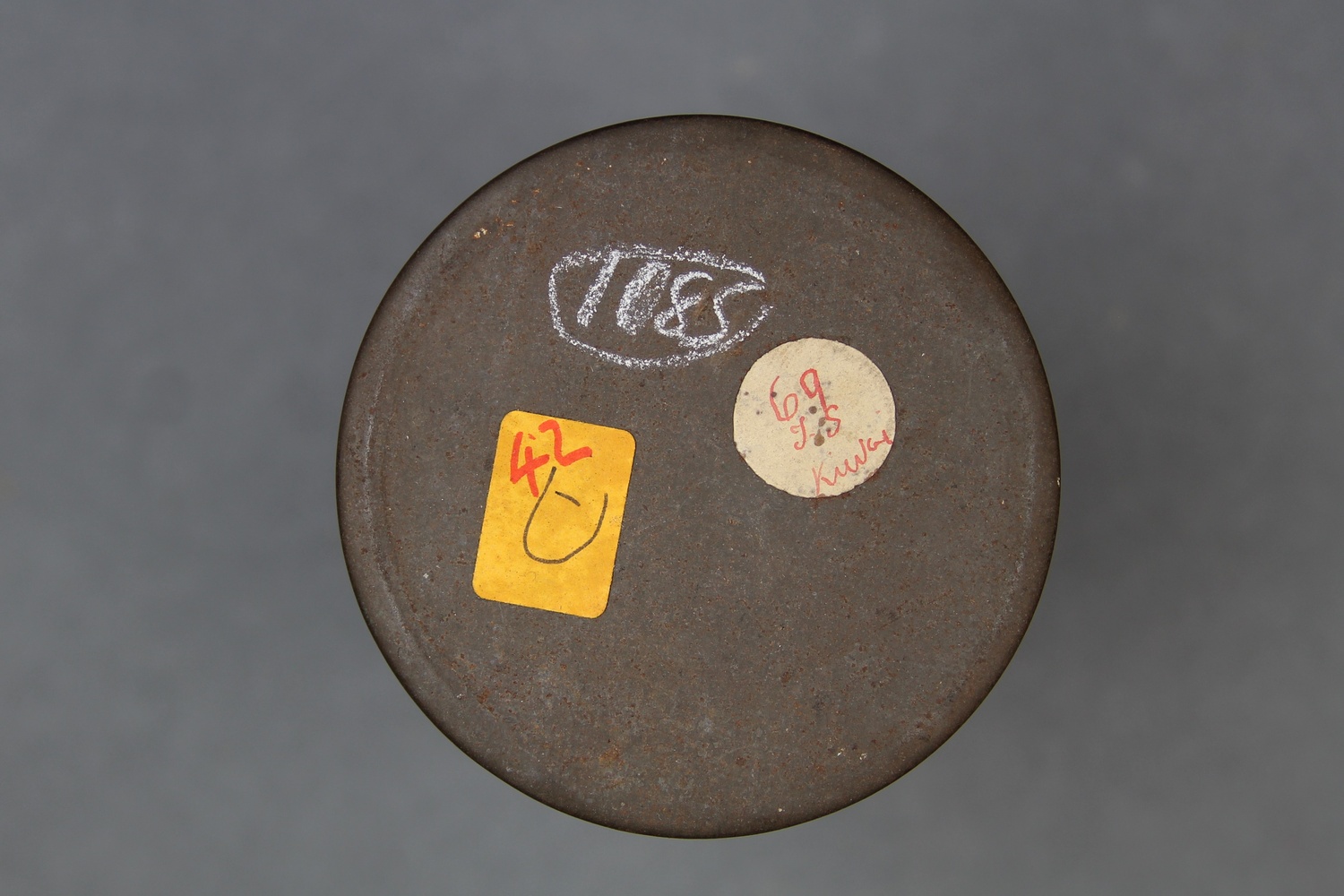     | Haddon, Alfred Cort (ed.) 1935. Reports of the Cambridge Anthropological Expedition to Torres Strait: Volume I, General Ethnography. Cambridge: Cambridge University Press. | ||||||
| C80/1086 | Kiwai Lament | Unidentified | Kiwai Island, Western District, British New Guinea | 11 September 1898 – 1 October 1898 | Cylinder damaged, unable to be digitised | Southern Kiwai [kjd] (Island Kiwai dialect) | Field recordings; Laments | Ray, Sidney | Alfred Cort Haddon 1898 Expedition, British New Guinea | Brown wax cylinder | Alfred Cort Haddon 1898 Expedition (Torres Strait and British New Guinea) Cylinder Collection | British Library |   | |||||||||
| C80/1087 | Kiwai Badara | Unidentified (singer, male) | Kiwai Island, Western District, British New Guinea | 15 September 1898 – 29 September 1898 | 1. Announcement: "Kiwai Badara [indecipherable]." 2. Male vocal solo, acc. percussion. 3. Indecipherable announcement. 4. Unaccompanied male vocal solo. A song relating to the badara outdoor mimetic dance, a secular dance held for general amuseument, apparently introduced from Bugi (Haddon 1935:219). | Reasonable quality recording but with heavy surface noise due to mould on cylinder. | Southern Kiwai (Island Kiwai dialect) | Field recordings; Mimetic dance | Ray, Sidney | 2'25" | Alfred Cort Haddon 1898 Expedition, British New Guinea | Brown wax cylinder | Alfred Cort Haddon 1898 Expedition (Torres Strait and British New Guinea) Cylinder Collection | British Library |  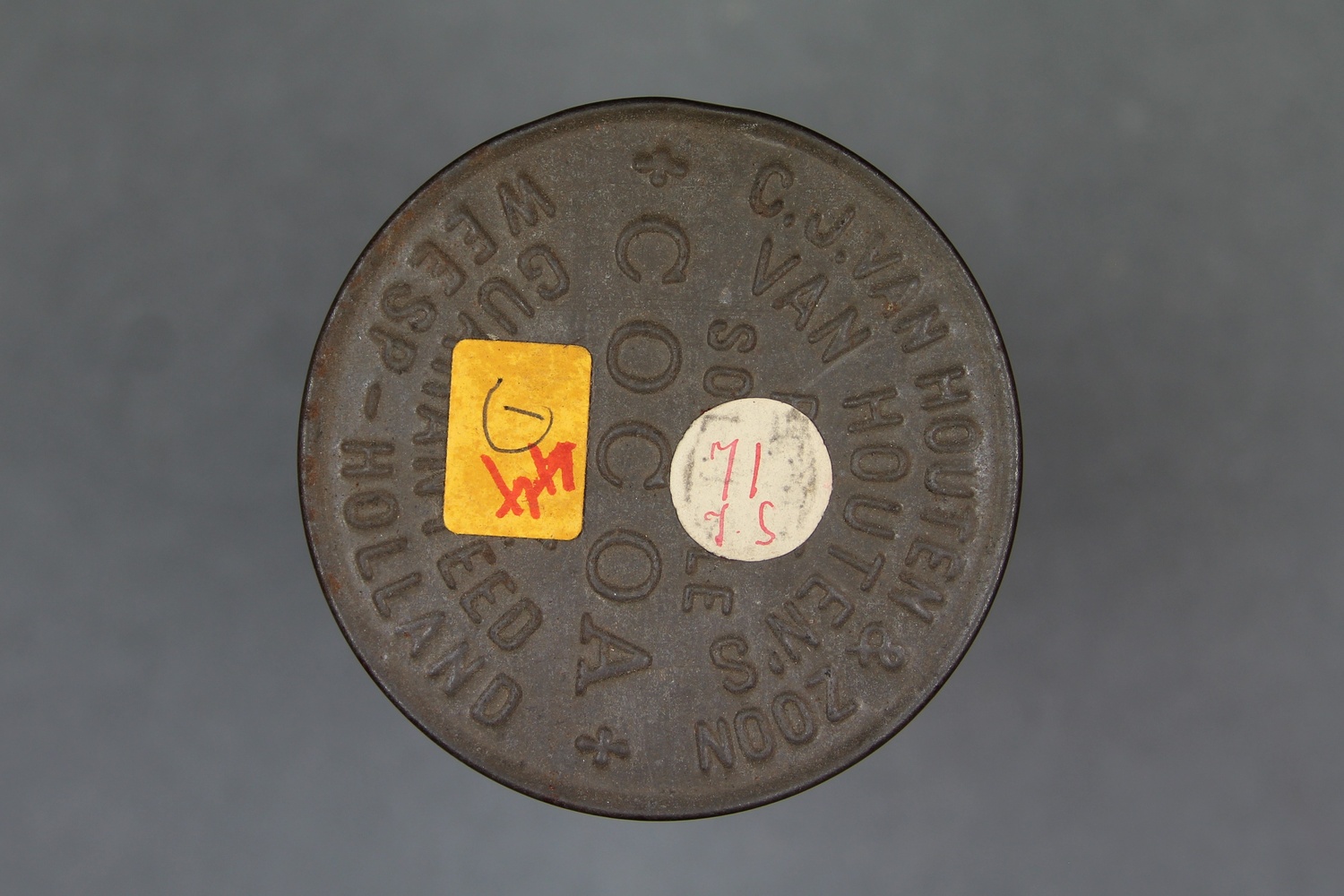     | Haddon, Alfred Cort (ed.) 1935. Reports of the Cambridge Anthropological Expedition to Torres Strait: Volume I, General Ethnography. Cambridge: Cambridge University Press. | ||||||
| C80/1088 | Moguru Wasare | Gamena, chief of Saguane? (singer, male) | Kiwai Island, Western District, British New Guinea | 28 September 1898 ? | 1. Indecipherable announcement. 2. Unaccompanied male vocal solo. "Moguru ceremony was the most secret and sacred ceremony of the Kiwai people (Haddon 1935:213-214) and Wasare meant hymn or song in the Kiwai langauge (Ray 1931). On 28 September he wrote that “Gamena's (chiefs) wife came this morning and sang into the phono. After women + children had gone Gamena sang the Moguru songs, which are chanted when the Orara is shown to the young men” (Ray 1898–1899:88). Gamena was the chief at Saguane (Ray 1907:318). | Poor quality recording with heavy surface noise and weak signal. | Southern Kiwai (Island Kiwai dialect) | Field recordings; Initiation song | Ray, Sidney | 2'10" | Alfred Cort Haddon 1898 Expedition, British New Guinea | Brown wax cylinder | Alfred Cort Haddon 1898 Expedition (Torres Strait and British New Guinea) Cylinder Collection | British Library |       | Haddon, Alfred Cort (ed.) 1935. Reports of the Cambridge Anthropological Expedition to Torres Strait: Volume I, General Ethnography. Cambridge: Cambridge University Press. | ||||||
| C80/1089 | Kiwai Madio [2] | Unidentified (singer, male) | Kiwai Island, Western District, British New Guinea | 15 September 1898 – 29 September 1898 | 1. Indecipherable announcement. 2. Unaccompanied male vocal solo. 3. Indecipherable announcement. 4. Unaccompanied male vocal solo. The performance is performed in Map language. Probably a song relating to the madia initiation ceremonies, said to be very old (Haddon 1935:217); may be a song relating to mado dance, similar but not as highly ranked | Reasonable quality recording but with surface noise due to mould on cylinder. | Southern Kiwai (Island Kiwai dialect) | Field recordings; Initiation song | Ray, Sidney | 2'07" | Alfred Cort Haddon 1898 Expedition, British New Guinea | Brown wax cylinder | Alfred Cort Haddon 1898 Expedition (Torres Strait and British New Guinea) Cylinder Collection | British Library |       | Haddon, Alfred Cort (ed.) 1935. Reports of the Cambridge Anthropological Expedition to Torres Strait: Volume I, General Ethnography. Cambridge: Cambridge University Press. | ||||||
| C80/1090 | Kiwai 5 | Unidentified (singer, male) | Kiwai Island, Western District, British New Guinea | 15 September 1898 – 29 September 1898 | 1. Indecipherable announcement. 2. Unaccompanied male vocal solo. 3. Indecipherable announcement. 4. Unaccompanied male vocal solo. | Poor quality recording with heavy surface noise and large ungrooved area on cylinder tracks 2 and 3. | Southern Kiwai (Island Kiwai dialect) | Field recordings | Ray, Sidney | 1'27" | Alfred Cort Haddon 1898 Expedition, British New Guinea | Brown wax cylinder | Alfred Cort Haddon 1898 Expedition (Torres Strait and British New Guinea) Cylinder Collection | British Library |  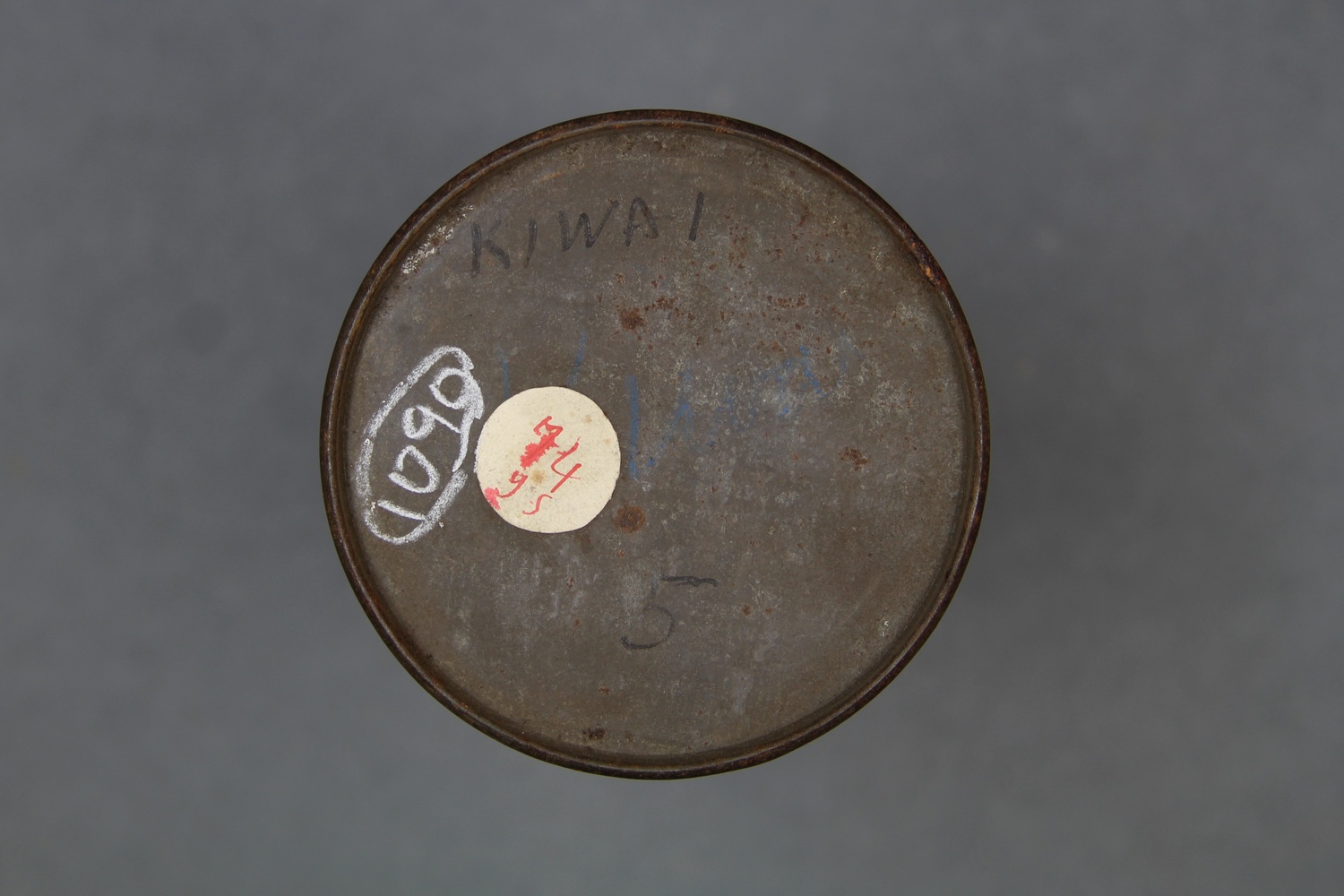     | |||||||
| C80/1094 | Mowatta | Pauna (singer, female) | Mowatta, Western District, British New Guinea? | 27 May 1898 – 30 October 1898 | 1. Indecipherable announcement. 2. Unaccompanied female vocal solo. Notes available: 'Mowatta. serasera arubia meaurami, sung by Pauna.' Pauna is mentioned a number of times in the Reports; she is referred to as “Pauna, wife of Maino of Tutu, herself originally a native of Mawata, New Guinea” (Haddon 1912:16), and again as Maino from Tutu-Yam’s wife (Haddon 1904:161). | Poor quality recording with weak signal and surface noise. | Southern Kiwai (Island Kiwai dialect) | Field recordings | Ray, Sidney | 2'09" | Alfred Cort Haddon 1898 Expedition, British New Guinea | Brown wax cylinder | Alfred Cort Haddon 1898 Expedition (Torres Strait and British New Guinea) Cylinder Collection | British Library | 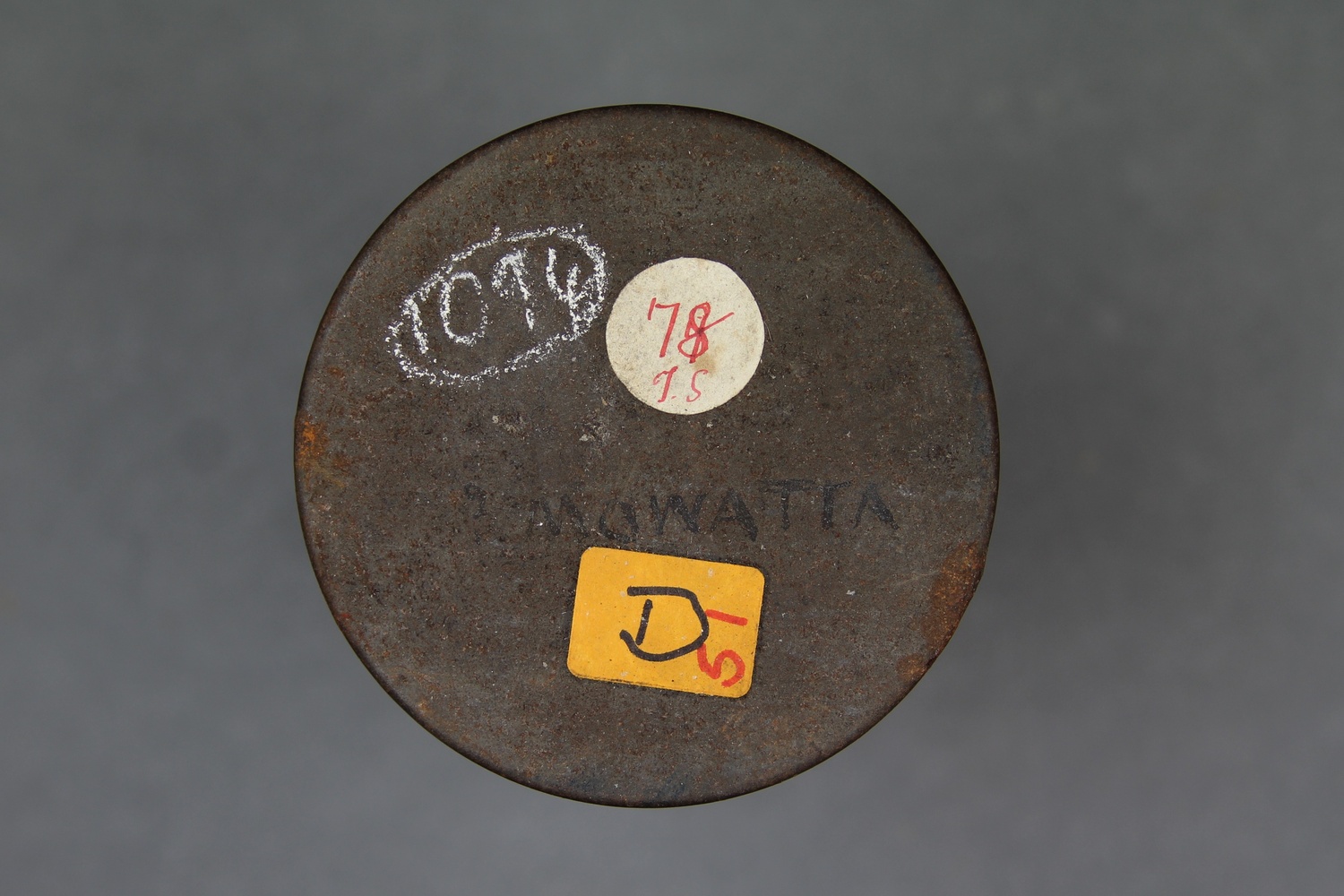 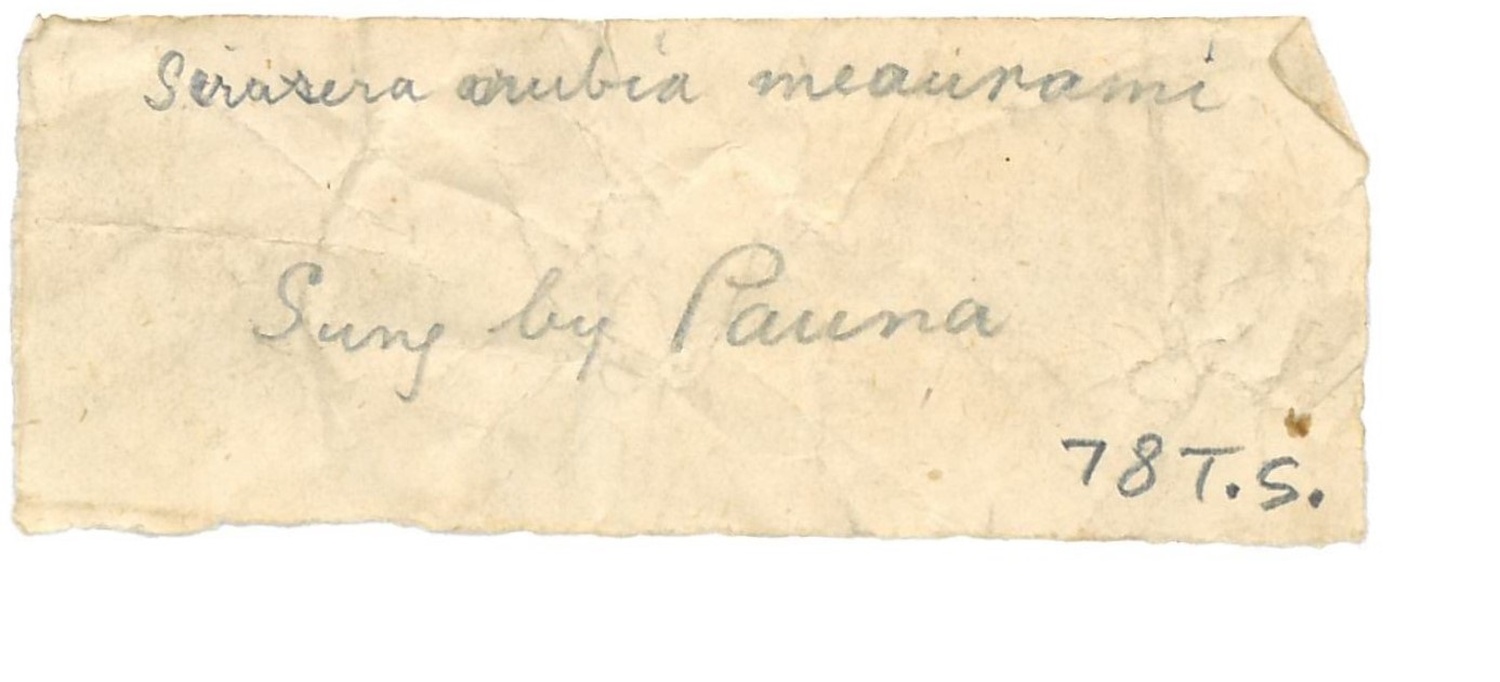     |
- Blayney, J. A. 1898. “Appendix M, Report of the Resident Magistrate for the Central Division, 22 July 1898”. In: Annual Reports of British New Guinea, 86–96: 90.
- British Library Board. 2010. Memory of The World Register: The Historic Ethnographic Recordings (1898–1951) at the British Library (United Kingdom). [pdf] UNESCO. Available at: <http://www.unesco.org/new/fileadmin/MULTIMEDIA/HQ/CI/CI/pdf/mow/nomination_forms/Uk%20ethnographic.pdf> [Accessed 28 April 2020].
- Clayton, Martin. 1996. “Ethnographic Wax Cylinders at the British Library National Sound Archive: A Brief History and Description of the Collection”. British Journal of Ethnomusicology, 5: 67–92.
- David, Frank, Leah Lui-Chivizhe, and Jude Philp. 2015. “Individuals in Kulkalgal History.” Journal of Australian Studies 39/3: 290–306.
- Dunlop, Ian. 1979. “Ethnographic Film-Making in Australia: The First Seventy Years (1898–1968)”. Aboriginal History, 3/1–2: 111–119.
- Edwards, Elizabeth. 1998. “Performing Science: Still Photography and the Torres Strait Expedition.” In Cambridge and the Torres Strait: Centenary Essays on the 1898 Anthropological Expedition, edited by Anita Herle and Sandra Rouse, 106-135. Cambridge: Cambridge University Press.
- Gash, Noel and Whittaker, June. 1975. A Pictorial History of New Guinea. Melbourne: The Jacaranda Press.
- Griffiths, Alison. 2002. Wondrous Difference: Cinema, Anthropology, and Turn-of-the-Century Visual Culture. New York: Columbia University Press.
- Haddon, Alfred Cort. 1890a. Manners and Customs of the Torres Straits Islanders. London: William Clowes.
- Haddon, Alfred Cort. 1890b. “The Ethnography of the Western tribe of Torres Strait”. Journal of the Anthropological Institute, 19: 297–440.
- Haddon, Alfred Cort. 1898–1899. Journal of the Cambridge Anthropological Expedition to the Torres Strait and New Guinea. Manuscript. MS.HADDON. Cambridge: Cambridge University Library.
- Haddon, Alfred Cort. 1899. “The Cambridge Anthropological Expedition to Torres Straits and Sarawak”. Nature, 1557/60: 413–416.
- Haddon, Alfred Cort. 1900. “Studies in the Anthropogeography of British New Guinea”. The Geographical Journal, 16/3: 265–291, 414–440.
- Haddon, Alfred Cort. 1901a. Head-Hunters. Black, White and Brown. London: Metheun & Co.
- Haddon, Alfred Cort (ed.) 1901b. Reports of the Cambridge Anthropological Expedition to Torres Strait: Volume II, Physiology and Psychology. Cambridge: Cambridge University Press.
- Haddon, Alfred Cort (ed.) 1904. Reports of the Cambridge Anthropological Expedition to Torres Strait: Volume V, Sociology, Magic and Religion of the Western Islanders. Cambridge: Cambridge University Press.
- Haddon, Alfred Cort (ed.) 1907. Reports of the Cambridge Anthropological Expedition to Torres Strait: Volume III, The Languages of Torres Strait. Cambridge: Cambridge University Press.
- Haddon, Alfred Cort (ed.) 1908. Reports of the Cambridge Anthropological Expedition to Torres Strait: Volume VI, Sociology, Magic and Religion of the Eastern Islanders. Cambridge: Cambridge University Press.
- Haddon, Alfred Cort (ed.) 1912. Reports of the Cambridge Anthropological Expedition to Torres Strait: Volume IV, Arts and Crafts. Cambridge: Cambridge University Press.
- Haddon, Alfred Cort (ed.) 1935. Reports of the Cambridge Anthropological Expedition to Torres Strait: Volume I, General Ethnography. Cambridge: Cambridge University Press.
- Haddon, Alfred Cort (ed.) 1946. “Smoking and Tobacco Pipes in New Guinea”. Philosophical Transactions of the Royal Society of London, series B, 232/586 (6 Jun): 1–278.
- Herle, Anita. 1998. “The Life-histories of Objects: Collections of the Cambridge Anthropological Expedition to the Torres Strait.” In Cambridge and the Torres Strait: Centenary Essays on the 1898 Anthropological Expedition, edited by Anita Herle and Sandra Rouse, 77–105. Cambridge: Cambridge University Press.
- Herle, Anita, and Sandra Rouse (eds.) 1998. Cambridge and the Torres Strait: Centenary essays on the 1898 anthropological expedition. Cambridge: Cambridge University Press.
- Holmes, John Henry. 1898. Diary of John H. Holmes 01 April 1898 to 31 December 1898. Manuscript. Records of the London Missionary Society. London: SOAS Library, digitised by AJCP https://nla.gov.au/nla.obj-1642900159
- Kolia, John. 1975. “A Balawaia Grammar Sketch and Vocabulary.” In Studies in Languages of Central and South-East Papua, edited by Tom E. Dutton, 107–226. Pacific Linguistics, C 19. Canberra: Australian National University.
- Kolia, John. 1981. “The Lala and Balawaia in Central Province.” In Oral Tradition in Melanesia, edited by Donald Denoon and Roderic Lacey, 231–239. Port Moresby: University of Papua New Guinea & Institute of Papua New Guinea Studies.
- Landtman, Gunnar. 1927. The Kiwai Papuans of British New Guinea. London: MacMillan and Co.
- Lawrence, David, and Pirjo Varjola. 2010. Gunnar Landtman in Papua: 1910 to 1912. Canberra: ANU E Press. Available at <http://epress.anu.edu.au/>.
- Langmore, Diane. 1989. Missionary Lives – Papua, 1874–1914. Honolulu: University of Hawaii Press
- Long, Chris and Laughren, Pat. 1993. “Australia’s First Films 1894-96, Part Six: Surprising Survivals From Colonial Queensland”. In Cinema Papers 96, edited by S. Murray, 32–37. Available at < https://ro.uow.edu.au/cp/96/> [Accessed 27 May 2020].
- Moyle, Alice. 1983. “Archaeomusicological Possibilities in Australia, Torres Strait and New Guinea.” Bikmaus 4/3: 131–135.
- Moyle, Alice. 1985. “The Torres Strait Phonograph Recordings: A Preliminary Listing of Contents”. Australian Aboriginal Studies, 2: 53–57.
- Moyle, Alice. 1987. “The Torres Strait Phonograph Recordings: A Preliminary Listing of Contents”. IASA Phonographic Bulletin, no. 49/November 1987: 11–17.
- Myers, Charles Samuel. 1898–1899. Journal on Torres Straits anthropological expedition. Manuscript. Haddon Papers. ADD 8073. Cambridge: Cambridge University Library.
- Myers, Charles Samuel. 1899. “Music: Torres Straits, etc.” The Journal of the Anthropological Institute of Great Britain and Ireland 29/1–2: 223.
- Myers, Charles Samuel. 1912a. “Music.” In Reports of the Cambridge Anthropological Expedition to Torres Straits, Volume IV, Arts and Crafts, edited by Alfred Cort Haddon, 238–269. Cambridge: Cambridge University Press.
- Myers, Charles Samuel. 1941. “Charles Gabriel Seligman 1973–1940”. Bibliographical Memoirs of Fellows of the Royal Society, 3(10): 627–646.
- Niles, Don, Bergh Amos, and James Jesse Pongap. 1980. Notes on recordings from Tsiria village, Yule Island (Roro language), 13–24 February 1980. Institute of Papua New Guinea Studies, IPNGS 80-054.
- Oram, Nigel Denis. 1968. “Culture Change, Economic Development and Migration among the Hula.” Oceania 38/4: 243–275.
- Philp, Jude. 1999. “‘Everything as It Used to Be’: Re-creating Torres Strait Islander History in 1898”. The Cambridge Journal of Anthropology 21/1: 58–78.
- Quiggin, Alison Hingston. 1942. Haddon the Head Hunter: A Short Sketch of the Life of A. C. Haddon. Cambridge: Cambridge University Press.
- Ray, Sidney Herbert. 1895. The Languages of British New Guinea. The Journal of the Anthropological Institute of Great Britain and Ireland 24: 15-39
- Ray, Sidney Herbert. 1898–1899. Journal: Torres Straits Expedition 1898–99. Manuscript. MS 380314. London: SOAS Library.
- Ray, Sidney Herbert. 1899. “Language: New Guinea: Torres Straits”. The Journal of the Anthropological Institute of Great Britain and Ireland 29/1–2: 218–219.
- Ray, Sidney Herbert. 1907. Reports of the Cambridge Anthropological Expedition to Torres Strait: Volume III, Linguistics. Cambridge: Cambridge University Press.
- Ray, Sidney Herbert. 1931. A Grammar of the Kiwai Language, Fly Delta, Papua / by Sidney H. Ray; with a Kiwai Vocabulary by E. Baxter Riley. Port Moresby Government Press.
- Reid, R. E. 1978. “John Henry Holmes in Papua: Changing Missionary Perspectives on Indigenous Cultures 1890–1914”. The Journal of Pacific History, 13/3: 173–187.
- Seligmann, Charles Gabriel. 1902. “The Medicine, Surgery, and Midwifery of the Sinaugolo”. Journal of the Anthropological Institute of Great Britain and Ireland, 32: 297–304.
- Seligmann, Charles Gabriel. 1909. “A Classification of the Natives of British New Guinea”. The Journal of the Royal Anthropological Institute of Great Britain and Ireland, 39 (Jan–Jun): 246–275, 314–333.
- Seligmann, Charles Gabriel. 1910. The Melanesians of British New Guinea. Cambridge: Cambridge University Press.
- Ward, Alan. 1984. “The Frazer Collection of Wax Cylinders: An Introduction”. Recorded Sound, 85: 1–11.
- Wile, Raymond R. 1990. “The Development of Sound Recording at the Volta Laboratory”. Association for Recorded Sound Collections Journal, 21:2: 208–225. Available at <http://www.arsc-audio.org/journals/v21/v21n2p208-225.pdf>.































This is very interesting particularly the songs that have been preserved to this day.
I am from Mawatta and am so Happy I found all this information. I still need to know more
Thankyou